Insect Pinning Block
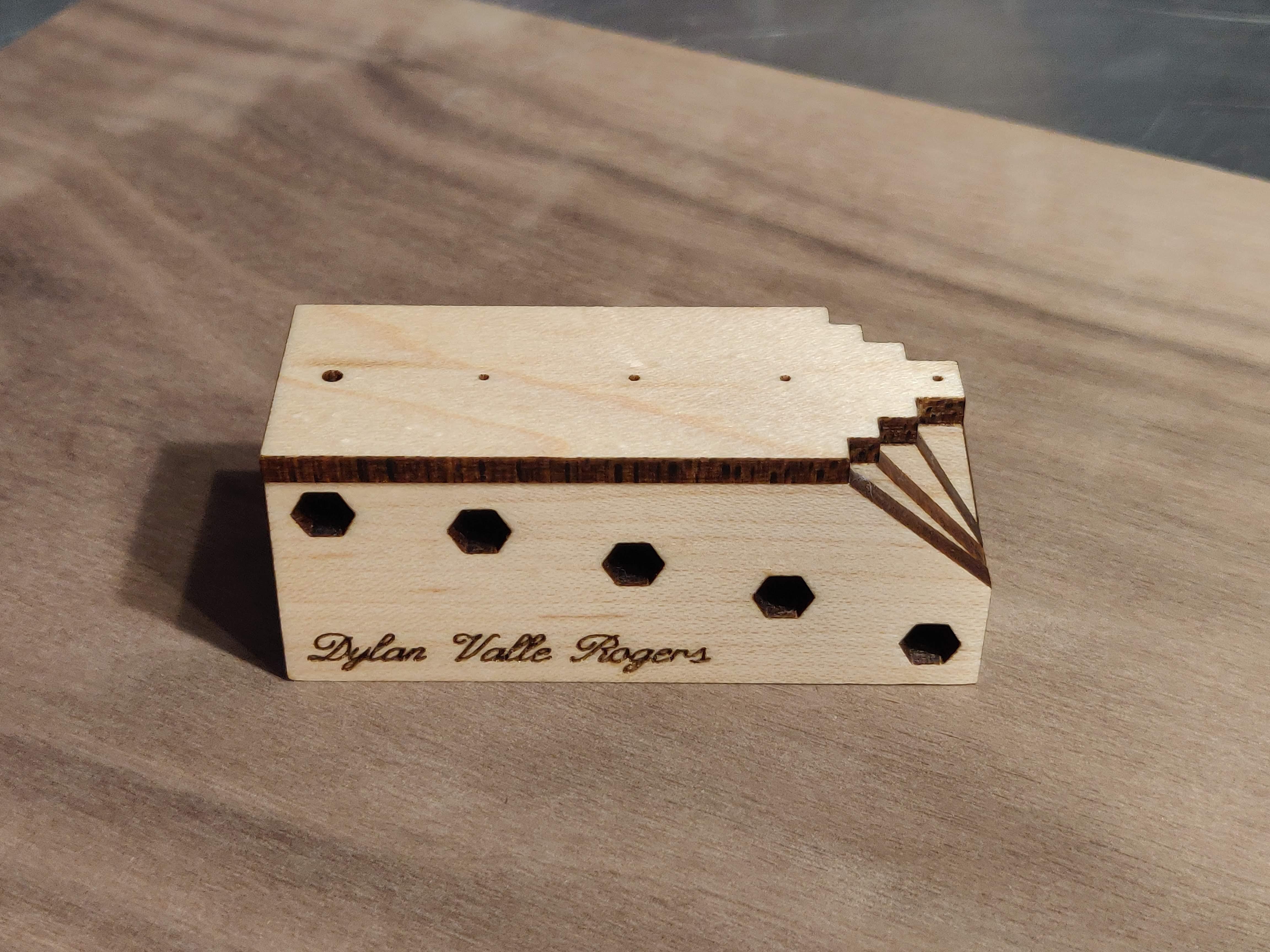
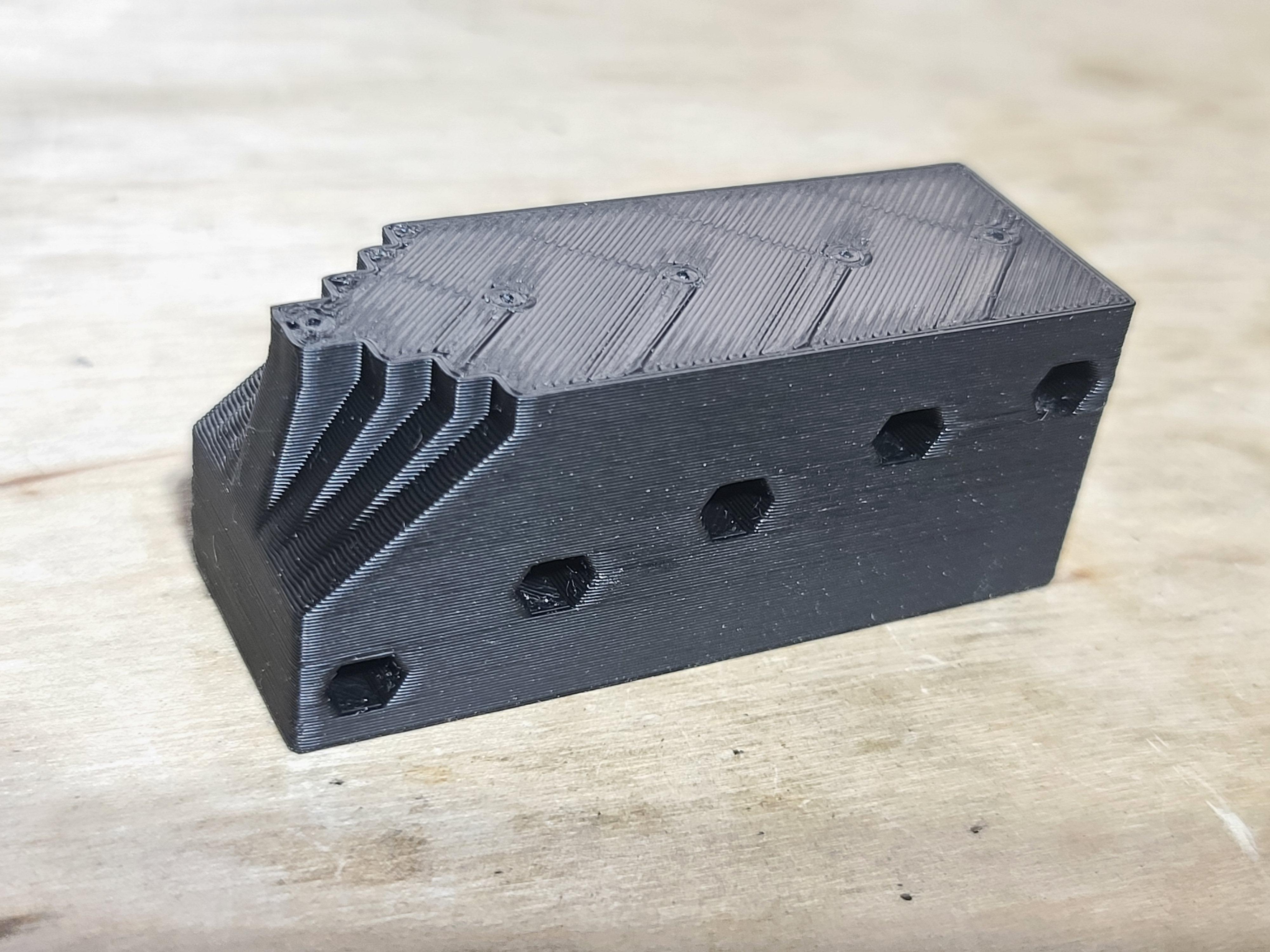
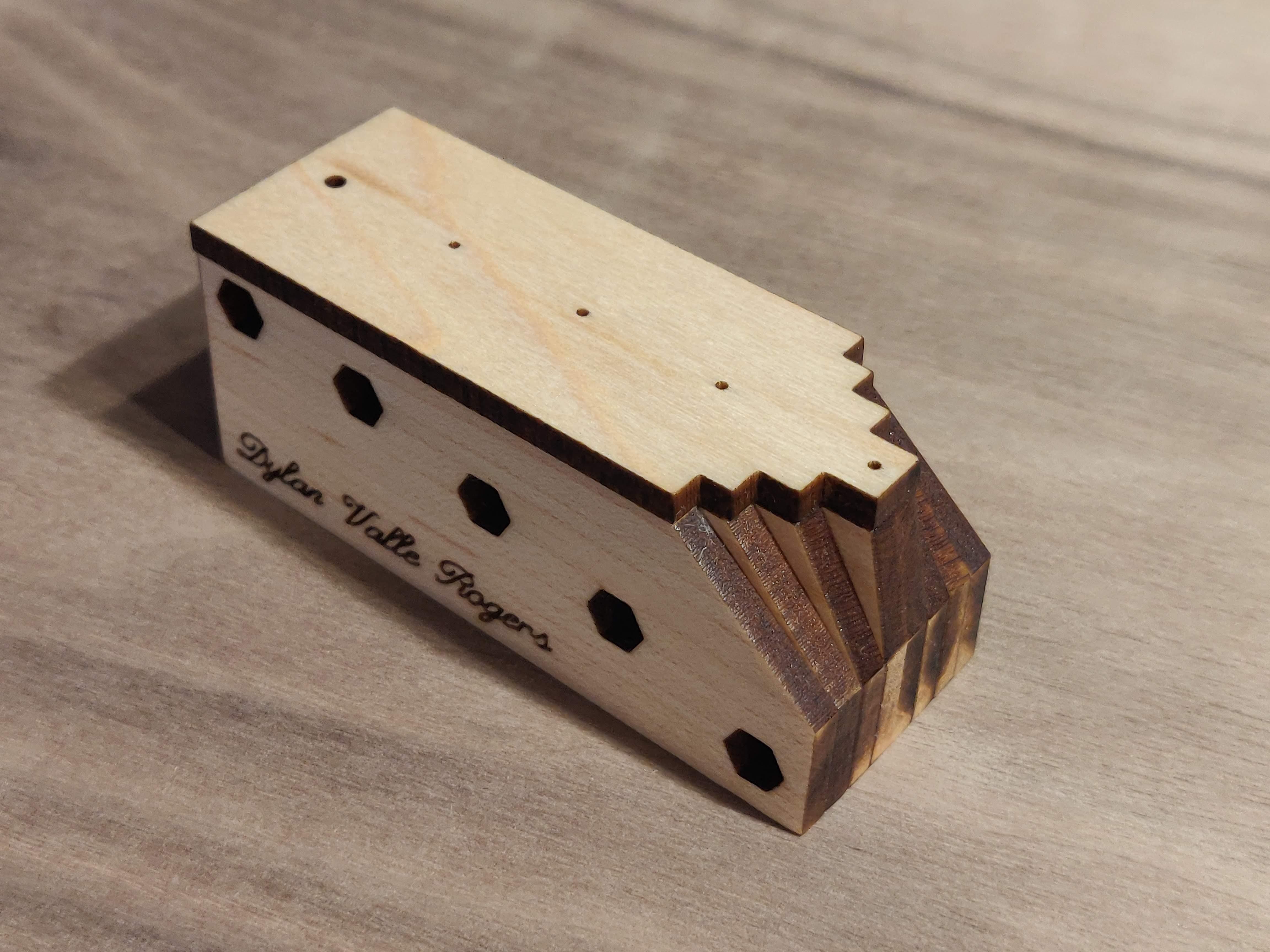
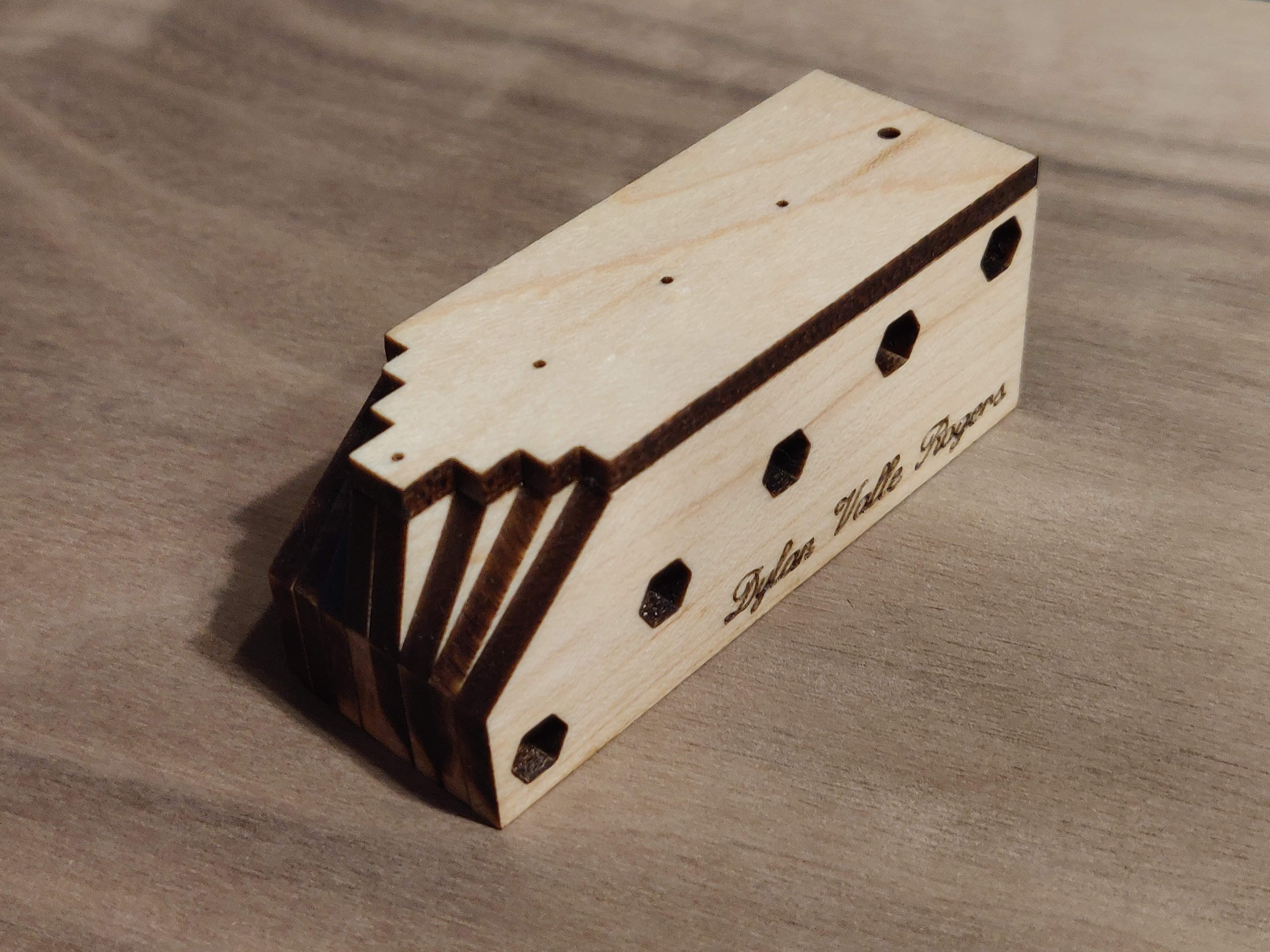
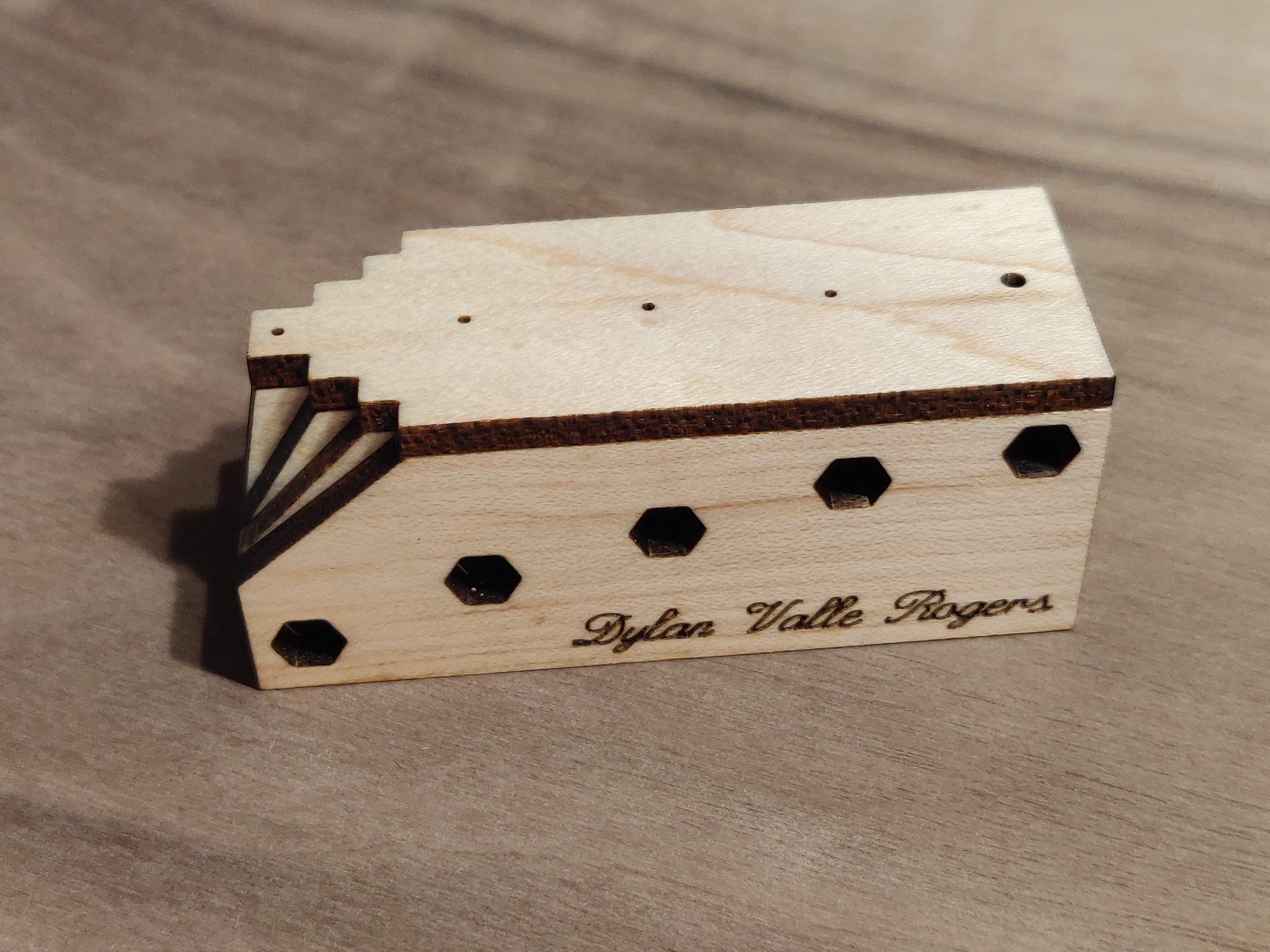
These instructions and files are for a laser-cut or 3D printed pinning block for insect specimens. This design is based off of the Rose Entomology pinning block. The depths of the five pinholes are 10, 12, 16, 20, and 26 mm and the 10 mm pinhole is enlarged to fit the head of the pin. This allows the height between the top of the pin and the insect to be set to exactly 10 mm. The 26 mm pinhole is for positioning point and minuten mounted specimens. This pinhole protrudes from the rest of the block to prevent small specimens from being crushed when setting the height of the point or minuten.
Jan 2023 Update: There is now a 3D printed version described separately in the 3D Printed Tools and Supplies subsection and the 3D Printed Version Instructions section at the very end of the Instructable.
Supplies
Laser-Cut Version Tools and Supplies:
- Laser Cutter
- Calipers
- Drill
- 1/8in Hard Maple OR 3mm/1/8in Plywood (Most plywood has voids filled with glue that the laser can't cut. This plywood is laser-friendly)
- 150 and 220 grit sandpaper (higher grits optional)
- Thin Super Glue and Thick Super Glue
- Boiled linseed oil (substitute with other oils or stains according to your preference)
- Wide Blue Painters' Tape (sticks to everything) or Laser Mask (Doesn't stick well to ply, only use with real wood)
- Old gift card or other card you don't care about (to flatten the tape and ensure that it sticks)
- Insect Pin
- Light Colored Electrical Tape (Masking tape will also work, but electrical tape is better)
- Fine Tip Sharpie
- 1.5 mm or 1/16 in drill bit
3D Printed Version Tools and Supplies:
- 3D-printer and Filament
- Hand or Electric Drill that can accommodate a 1mm drill bit
- 1.5 and 1.0 mm drill bits (Note that the above hand drill set includes both sizes that you need)
- Hammer
- Thin screwdriver, Allen wrench, or metal punch with a diameter less than 4.5 mm.
- Block of sacrificial wood
- The largest size insect pin you'll want to use with the block. In my case, it was a size 6.
File Selection
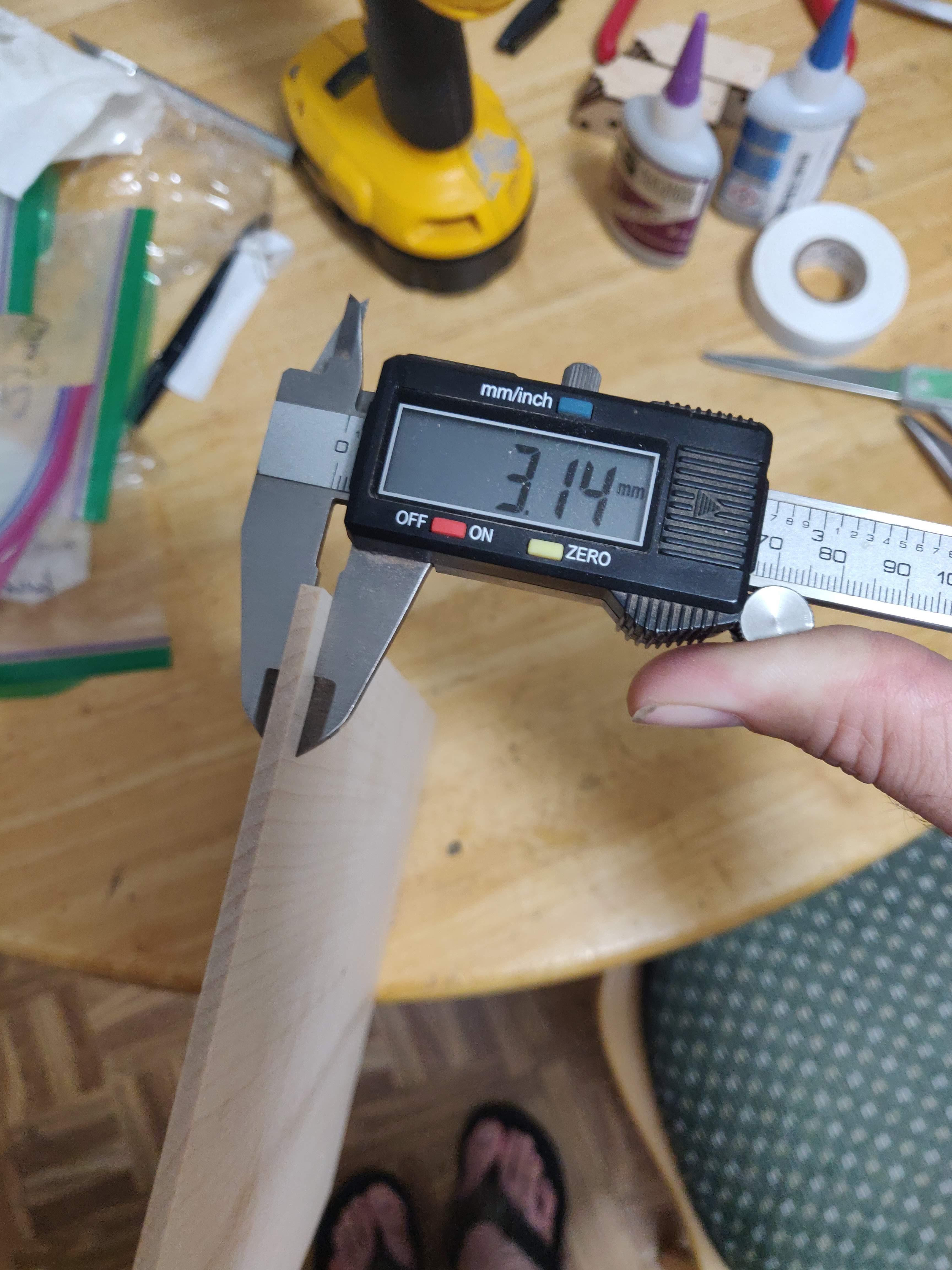
The files come in .ai, .svg, .dxf, and .pdf file types. There are also files for wood thicknesses 2.8-3.2 mm. The files do not include the engraved signature shown in the photos.
- Download the .rar file and unzip with Winrar or similar.
- Measure the thickness of the plywood. As long as it is between 2.8 mm and 3.4 mm, it should work.
- Select the next largest file size. For example, if you measure the plywood as 2.84 mm, you should select the 2.9 mm files. It's better that the pieces fit together loosely than not at all, so always round up, not down.
- Figure out what file type is easiest to send to your laser. If you use the .dxf file, be sure to import it with mm as the units.
- Now that you know the actual thickness of the wood and the best file type for your laser, select the corresponding files.
Downloads
Cutting
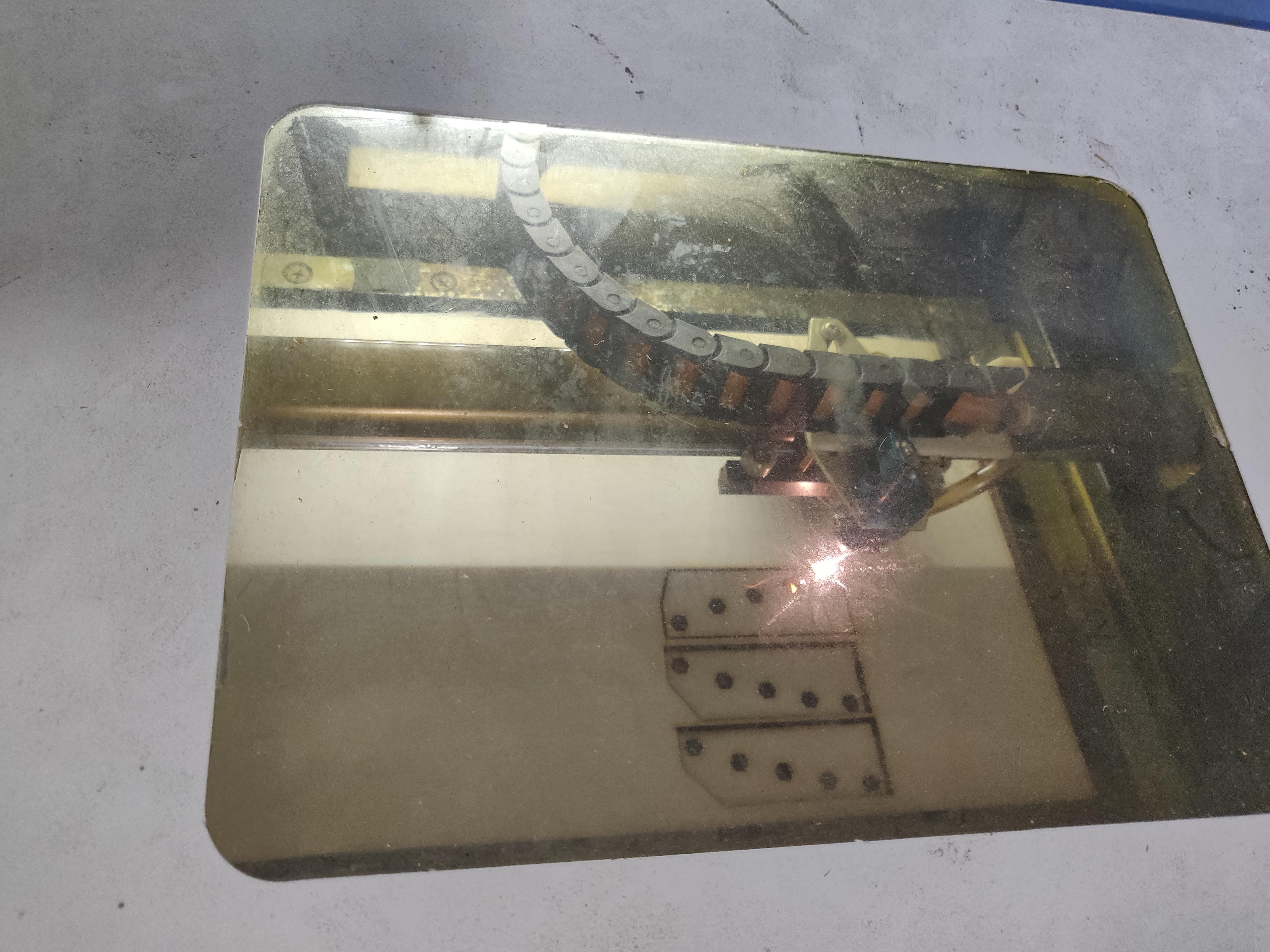
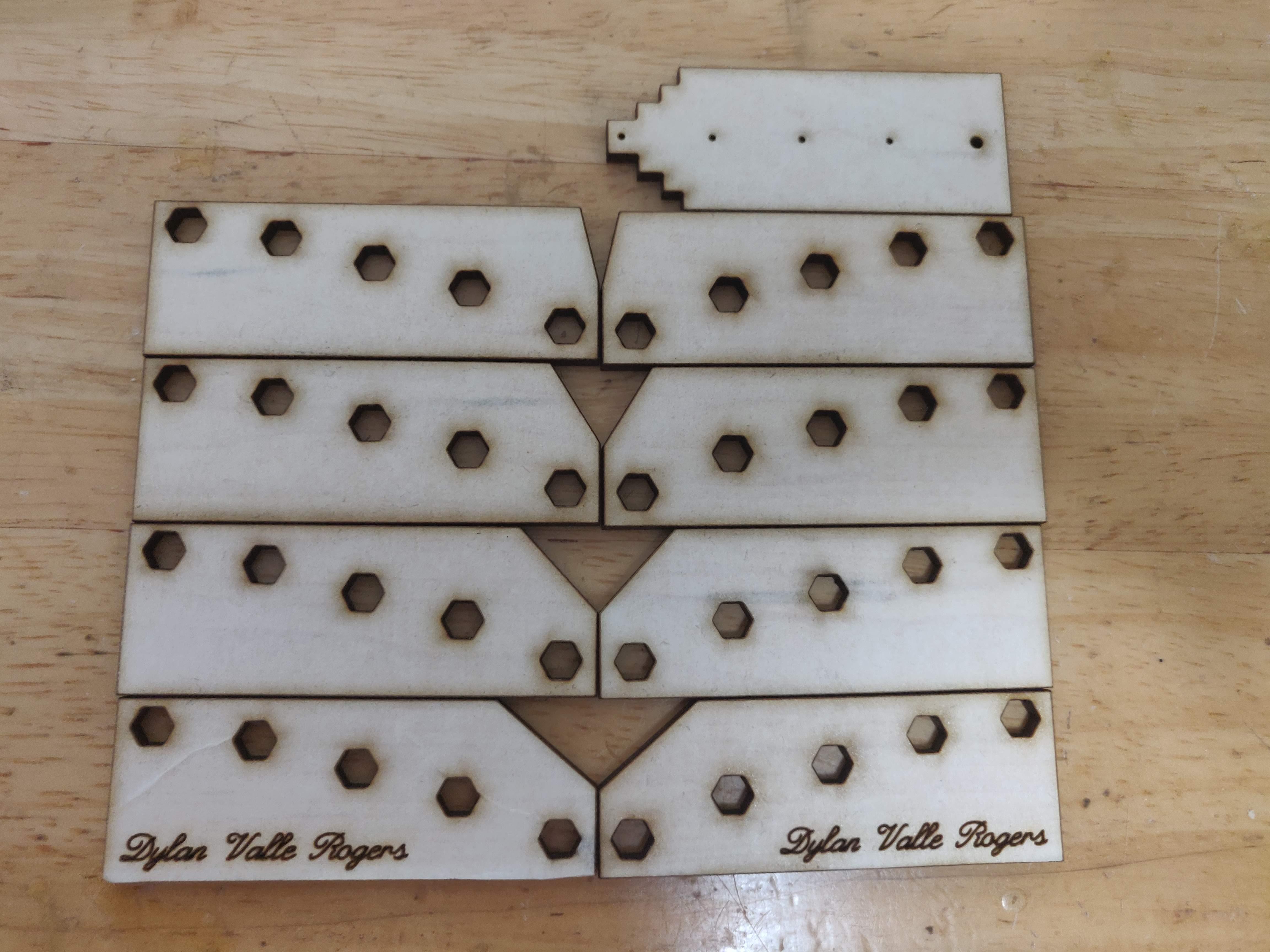
- Ensure that the kerf on your laser is properly accounted for in your laser control software. If it isn't, then your pieces will not fit properly. Helpful info on kerf
- Tape (or use laser mask on) the top of your plywood (or hardwood) and then use the gift card to flatten any wrinkles and ensure that the tape is well adhered to the surface. Flip it over and do the same for the bottom. This will keep char and smoke marks from disfiguring your pieces.
- Cut your pieces and remove them from the laser.
Initial Assembly
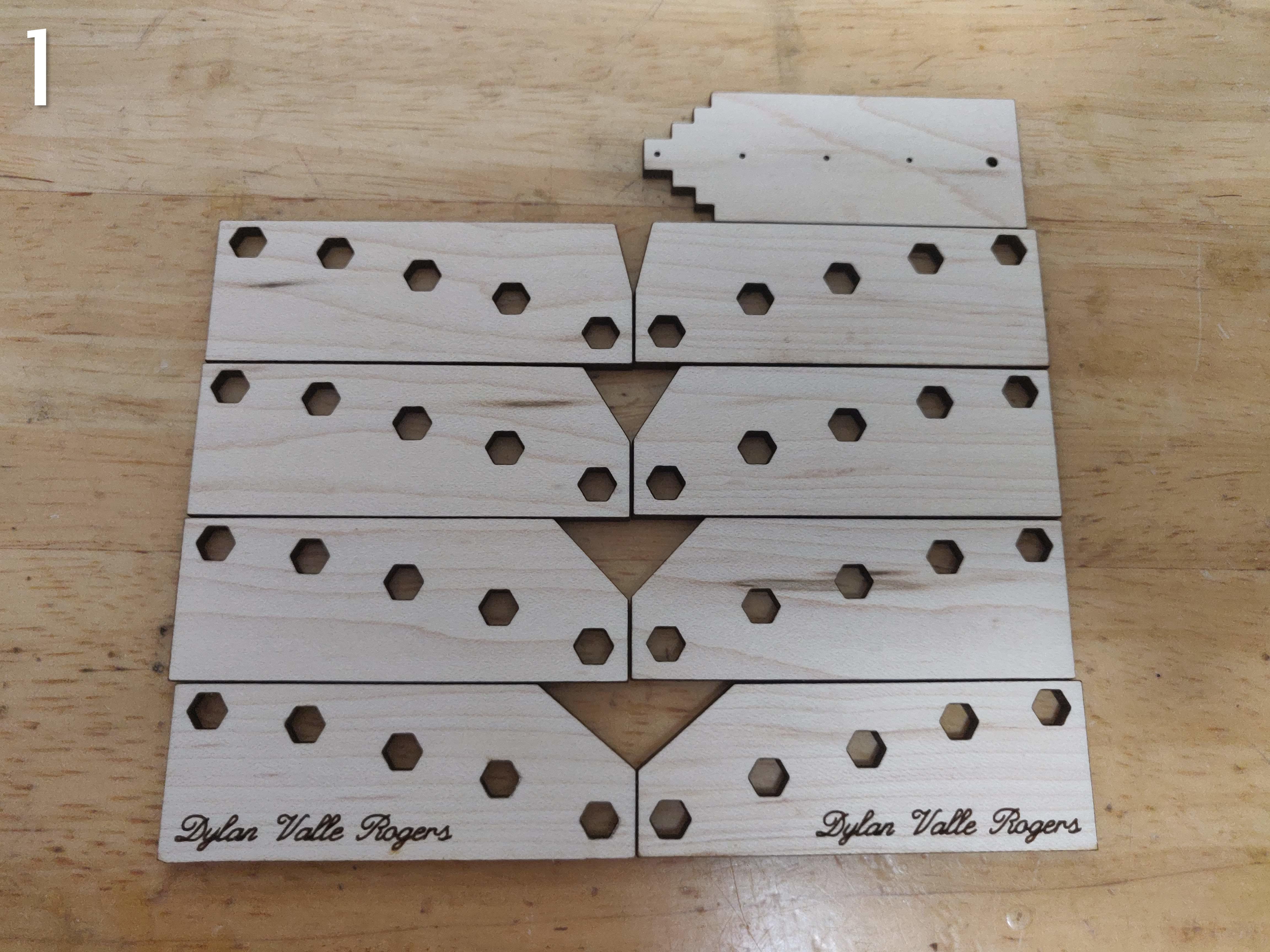
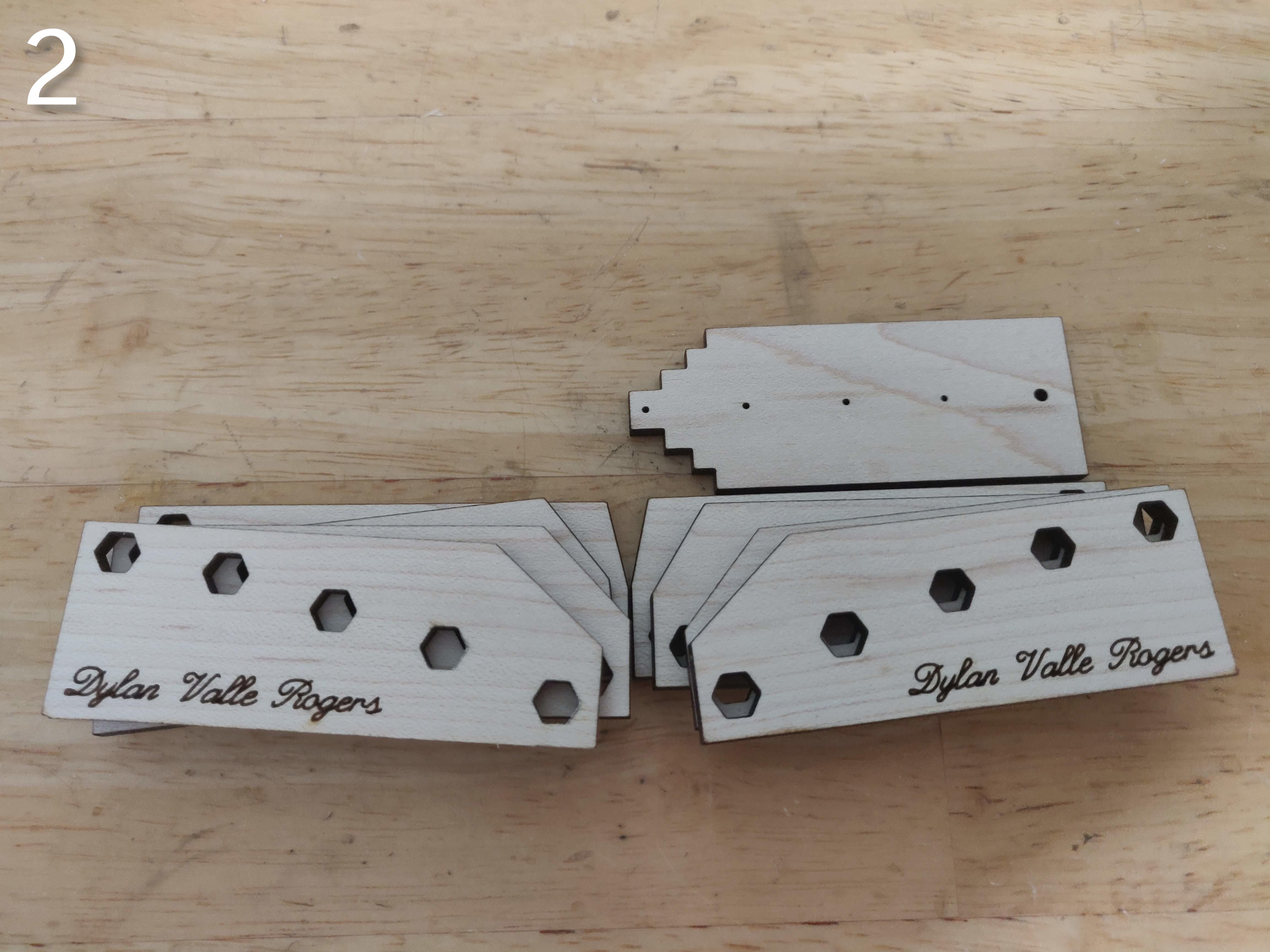
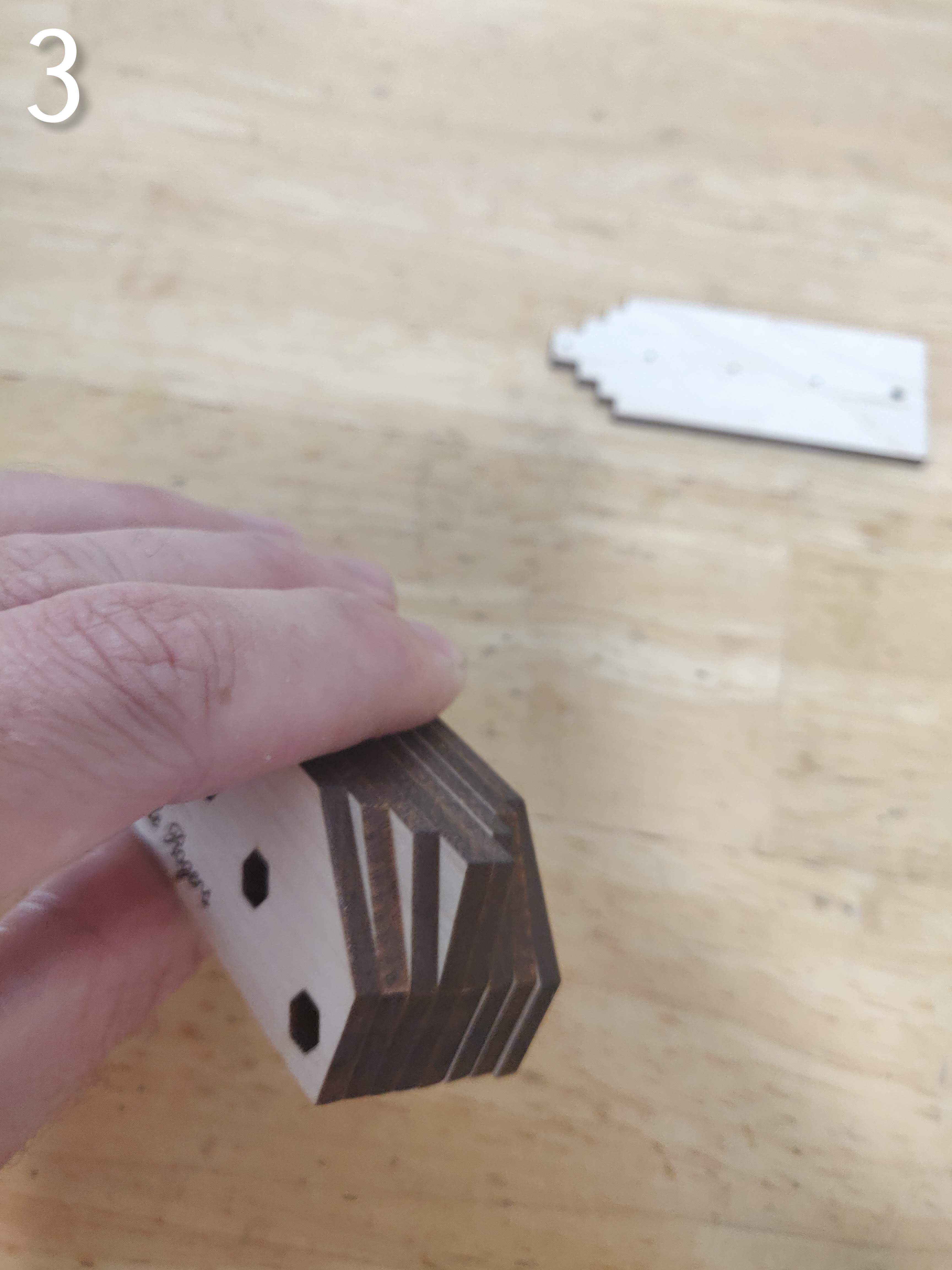
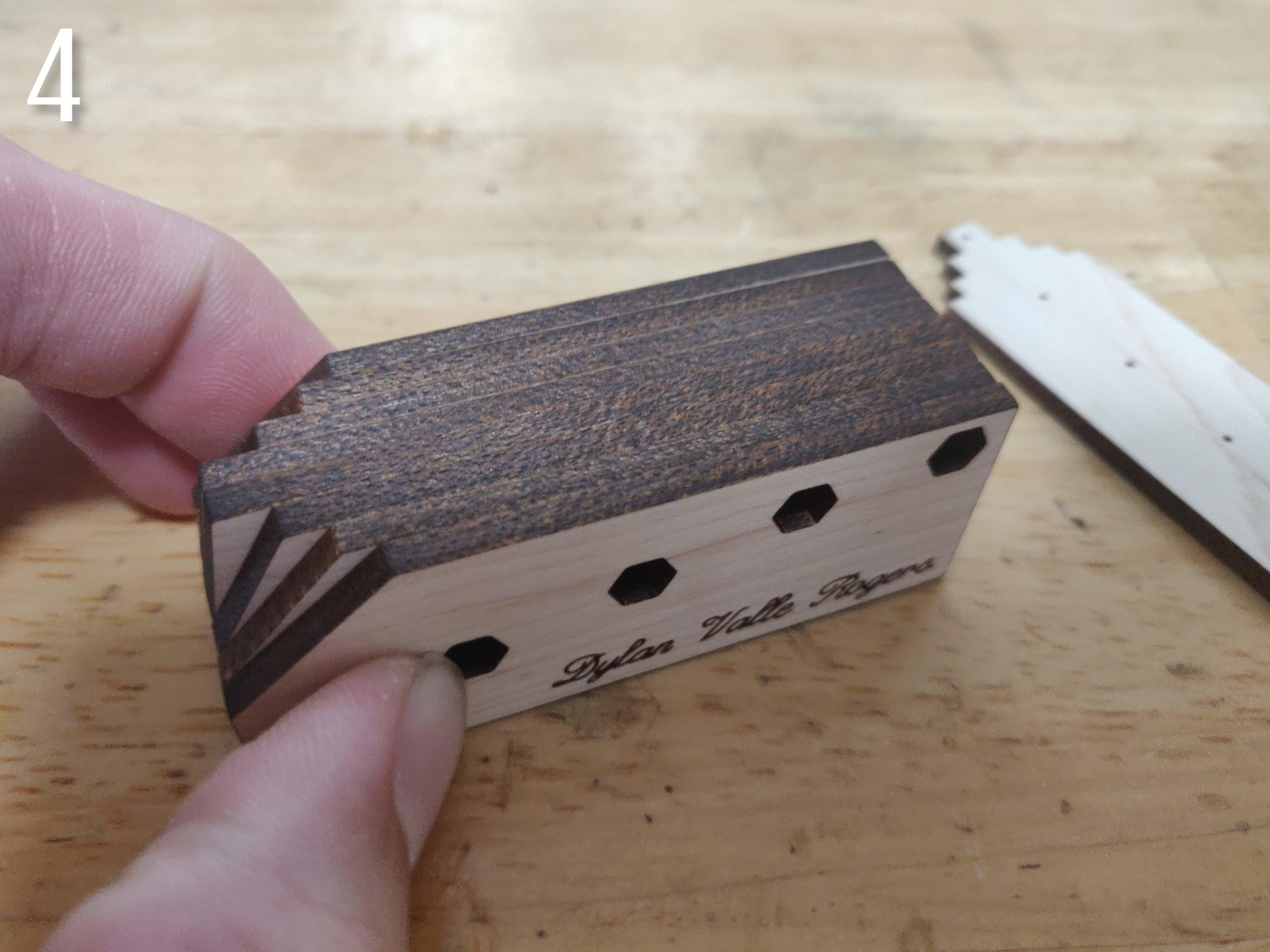
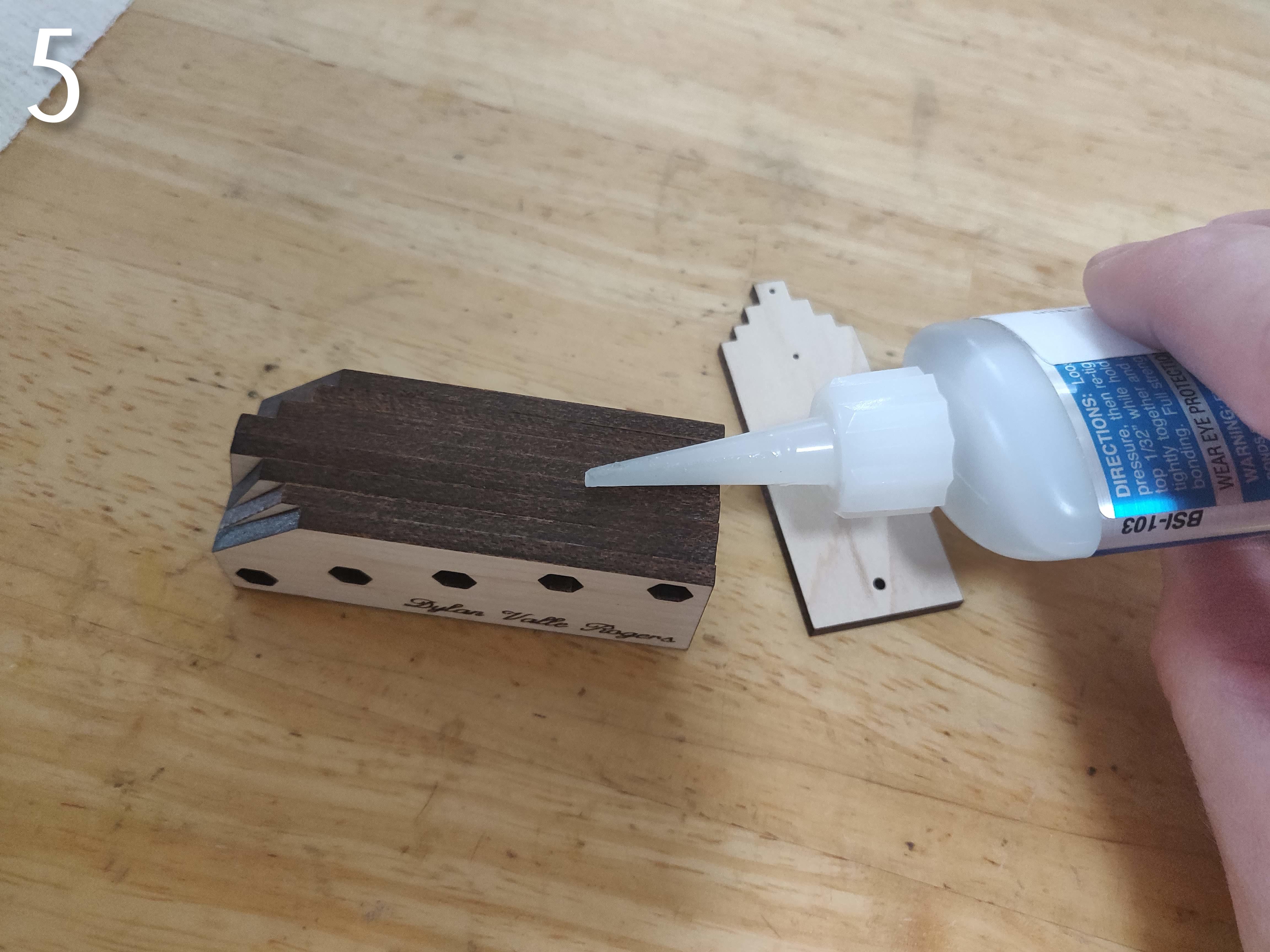
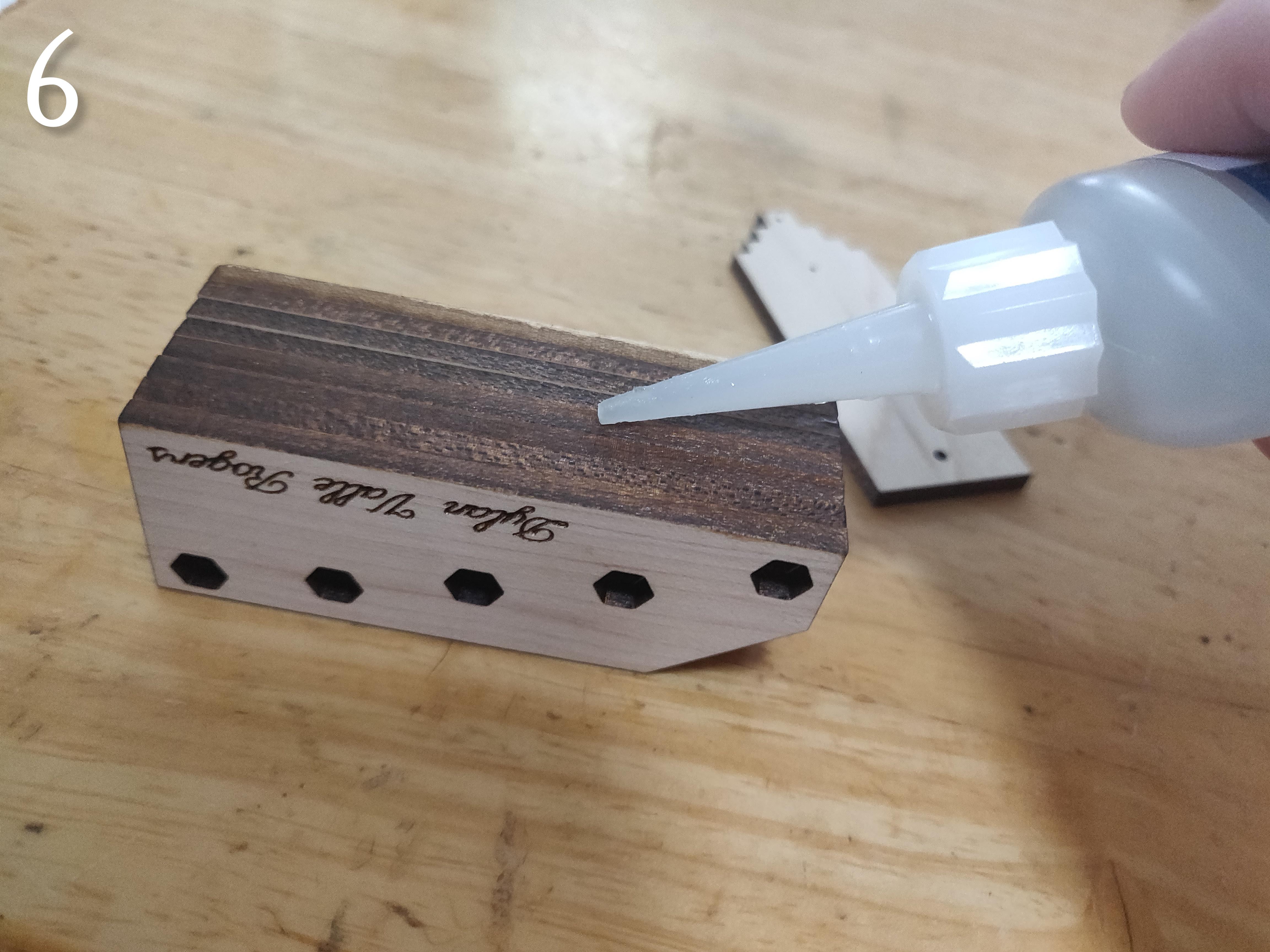
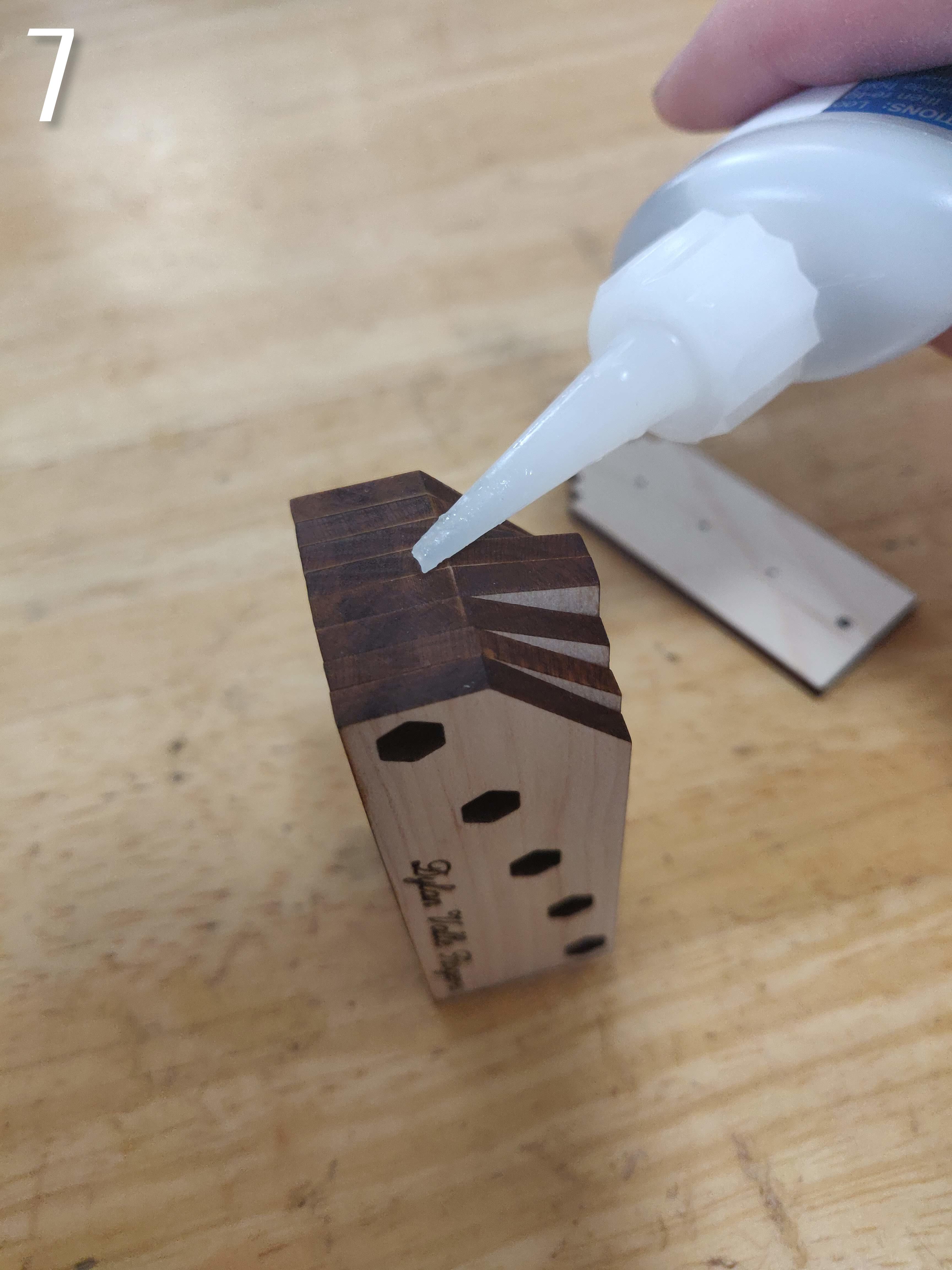
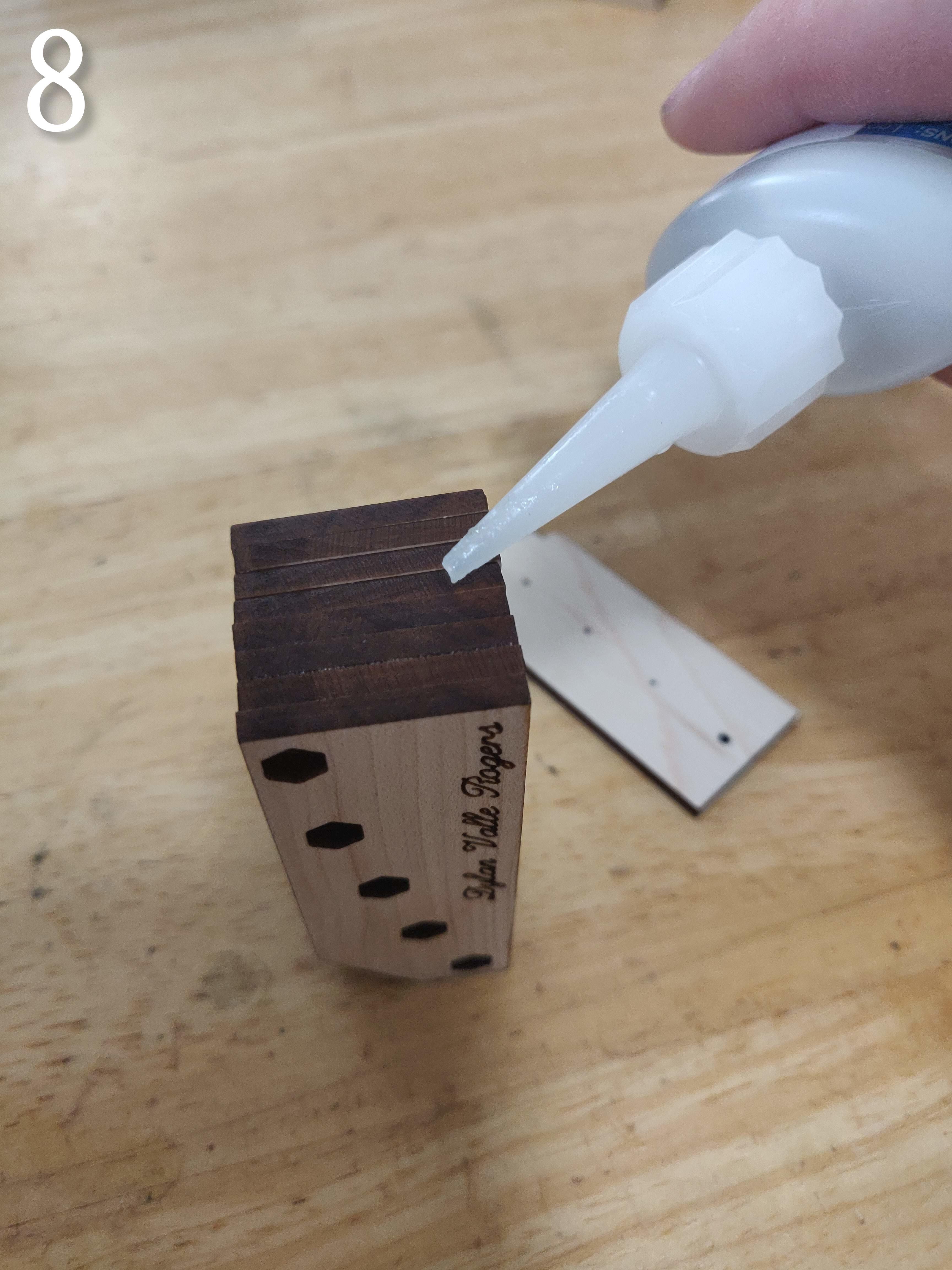
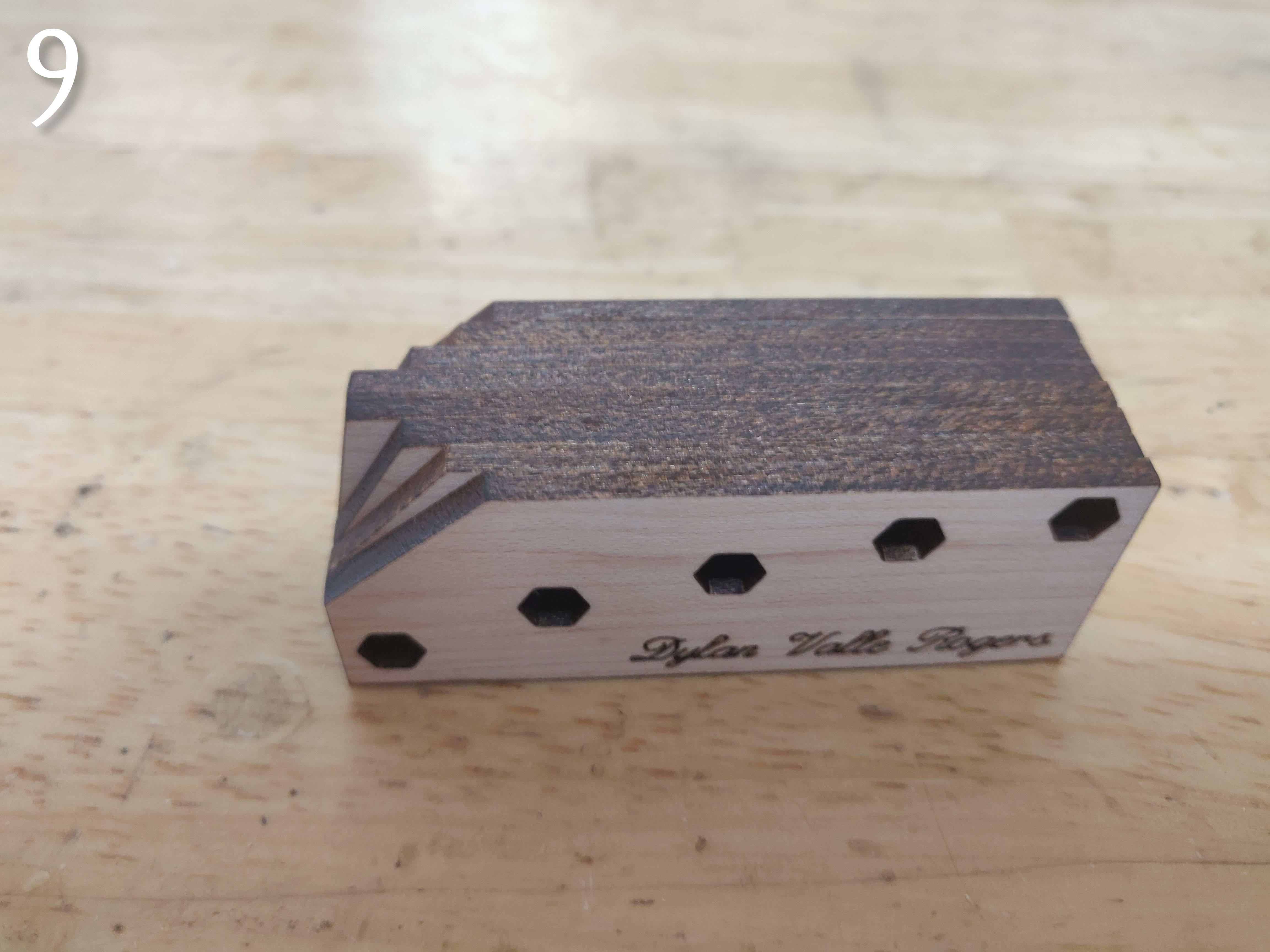
- Arrange the pieces as shown in photo 1. Remove the tape from each piece and lightly sand each side with 220 grit parallel to the grain to remove splinters. If you're using hardwood the sanding step might not be necessary.
- Make sure that you got rid of ALL of the tape. Your block will be ruined if you leave the tape on and try to glue it together.
- Arrange the pieces as shown in photo 2.
- Combine the two stacks as shown in photo 3.
- Align the pieces as much as possible so that all of the flat edges line up.
- Soak the top, bottom, front, and back of the block with thin super glue. It should soak into and between the pieces until the whole block is solid. Try not to glue the block to the table.
Final Assembly
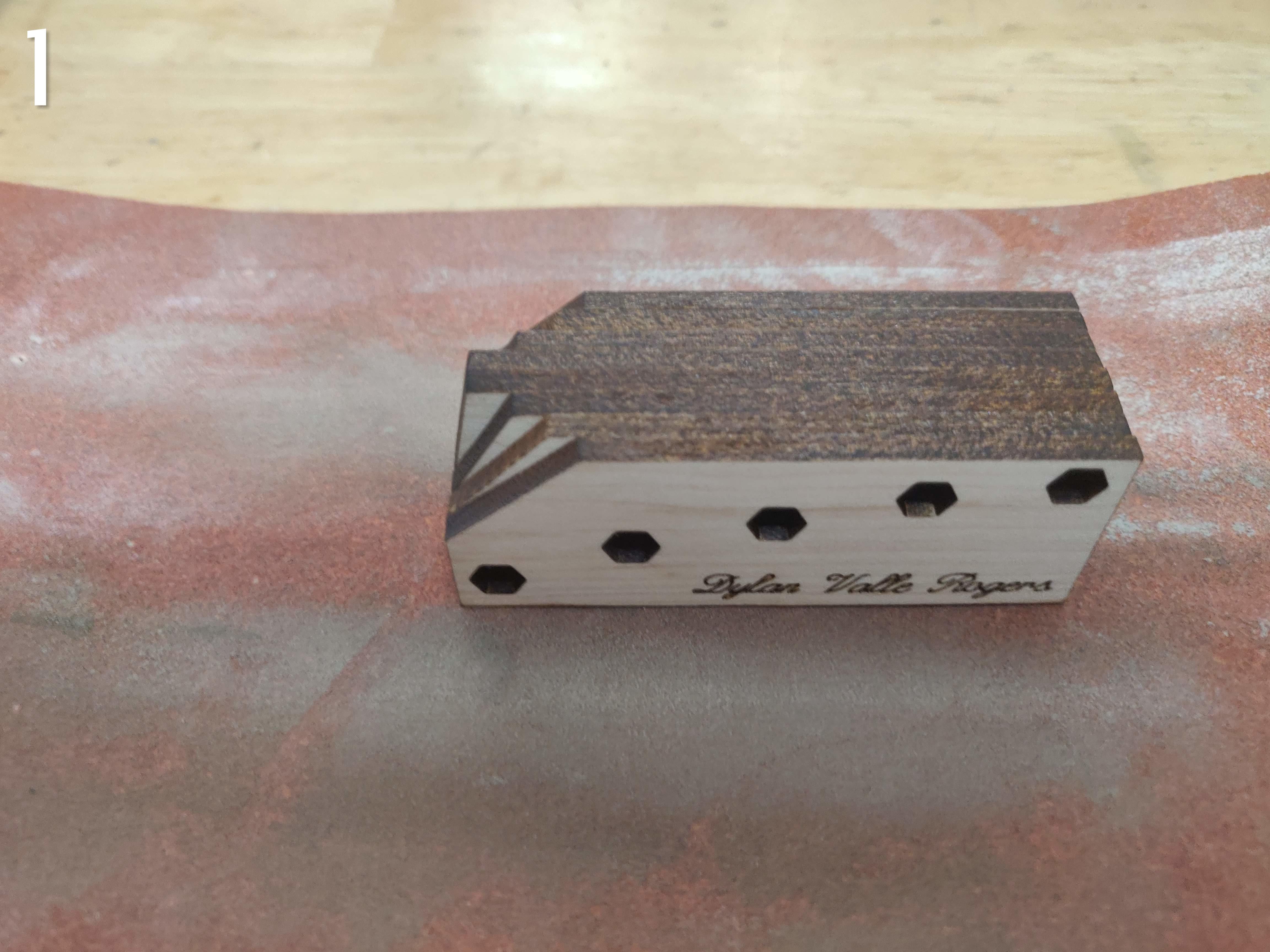
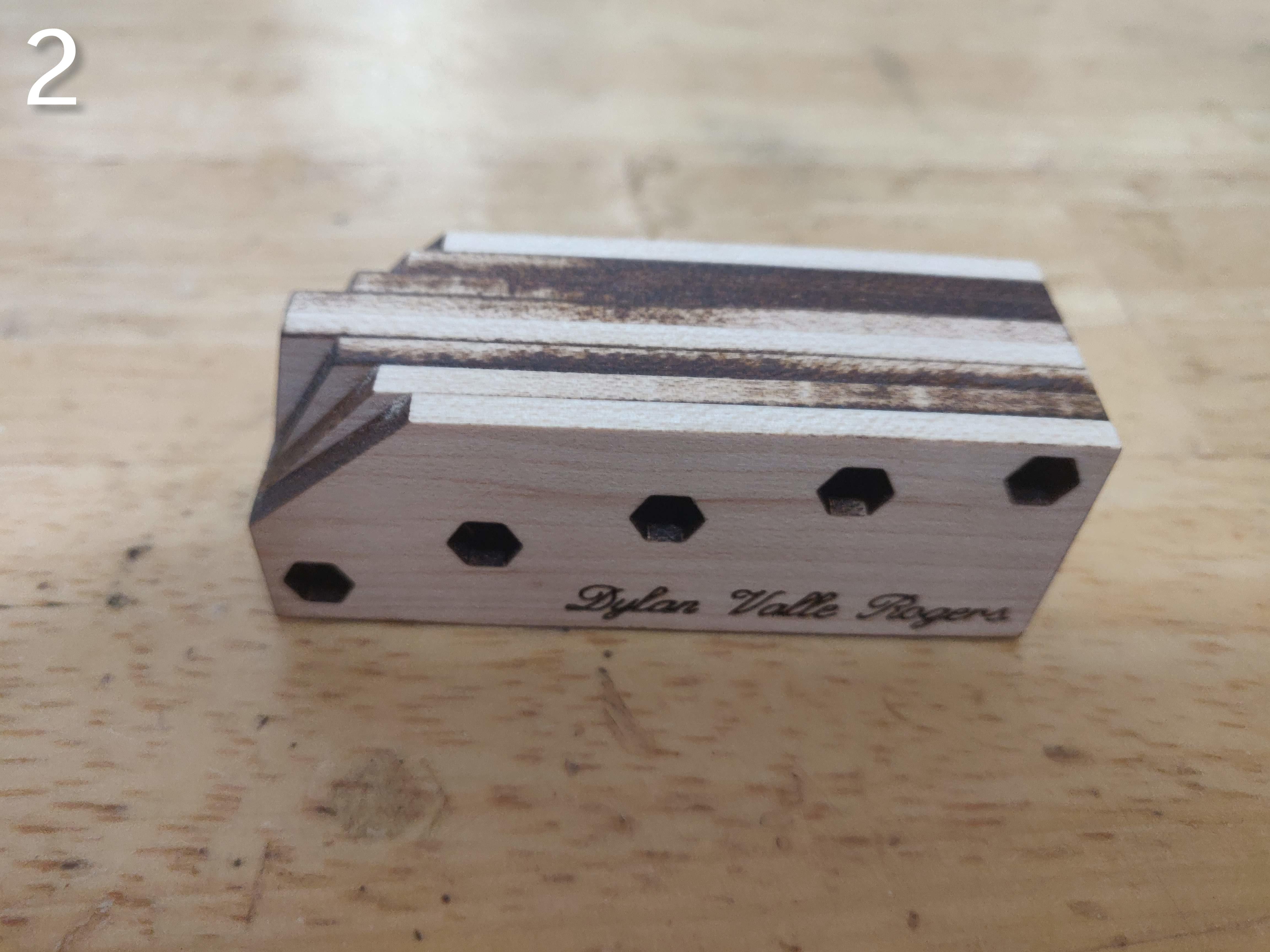
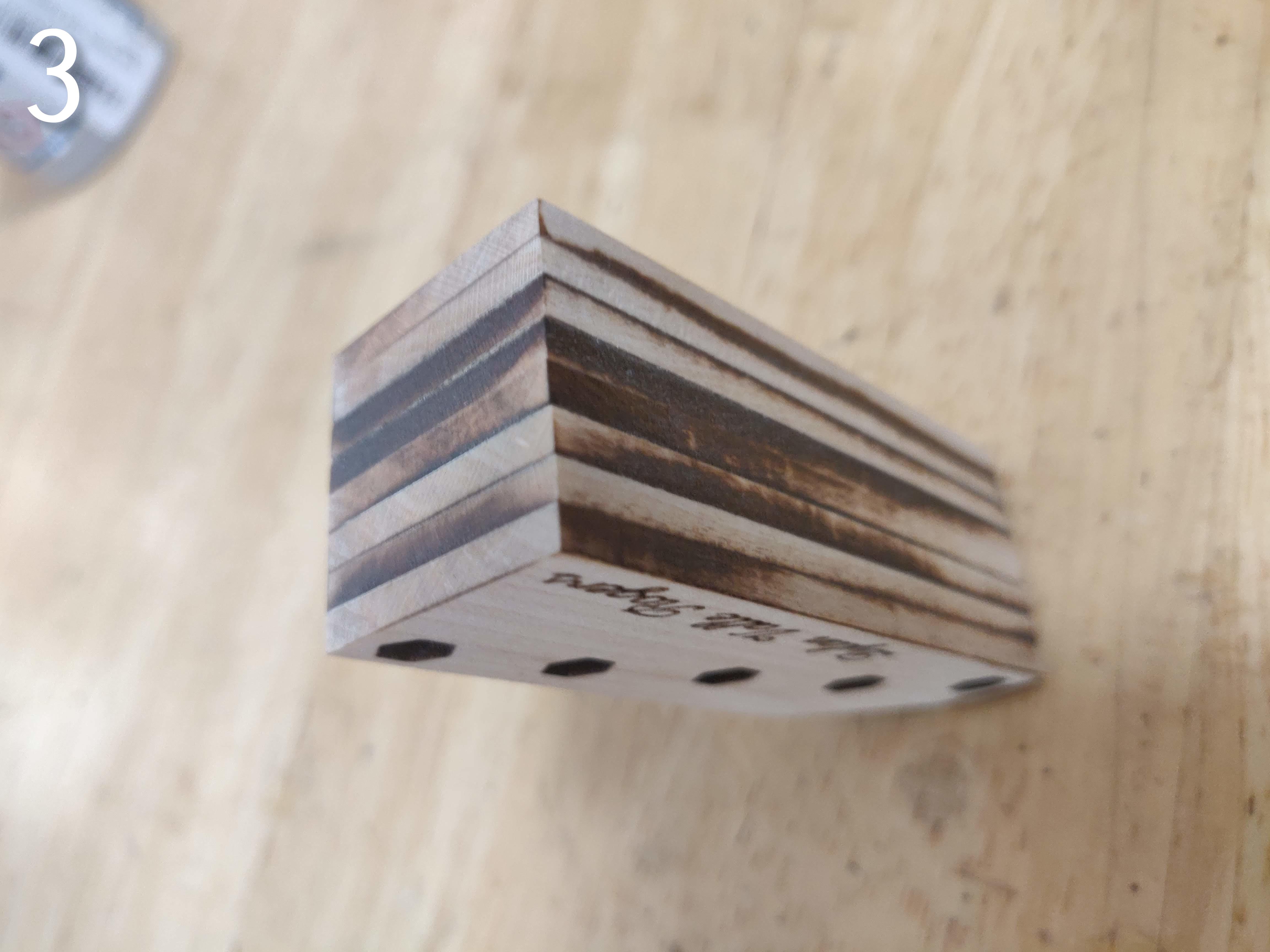
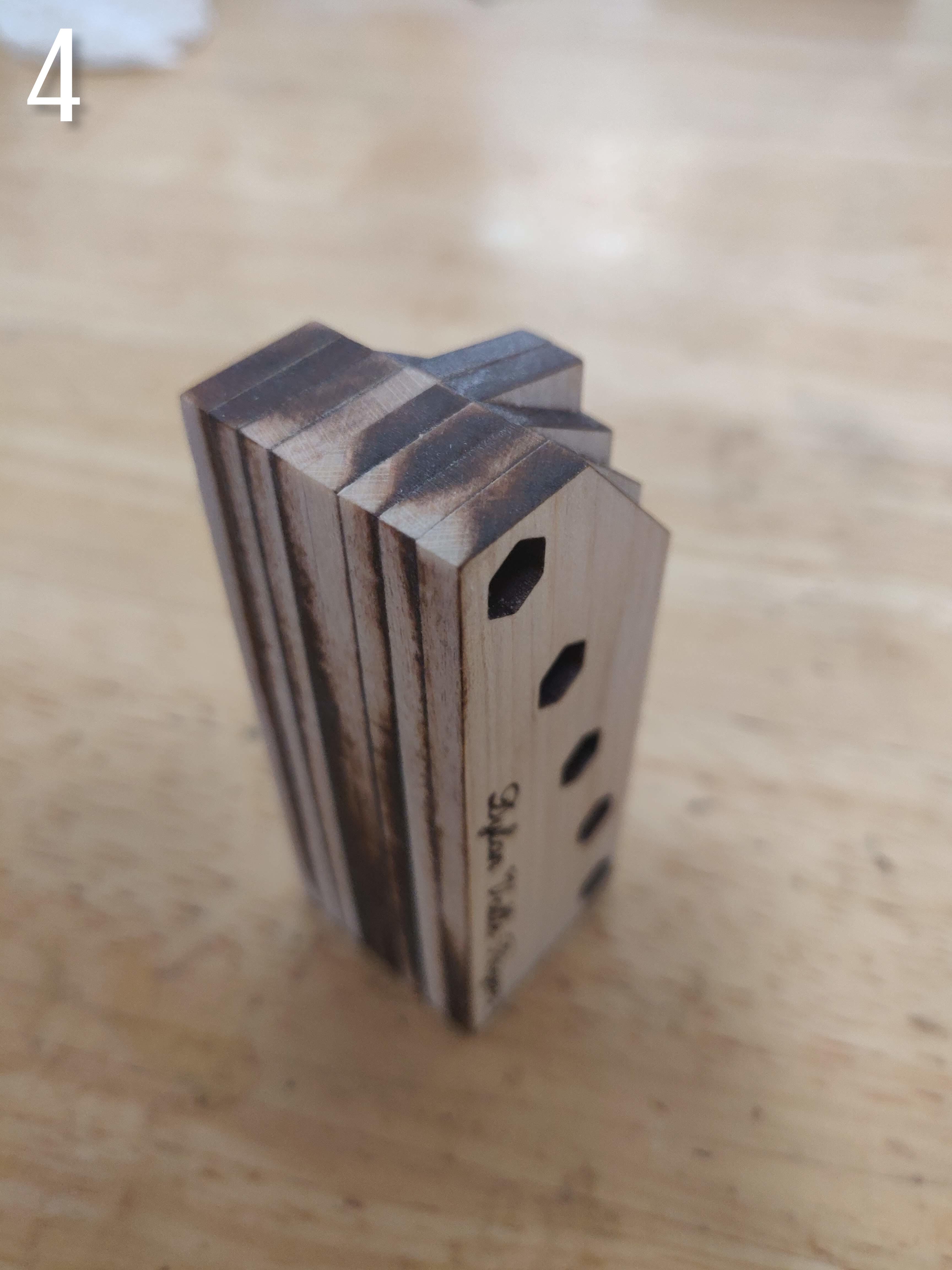
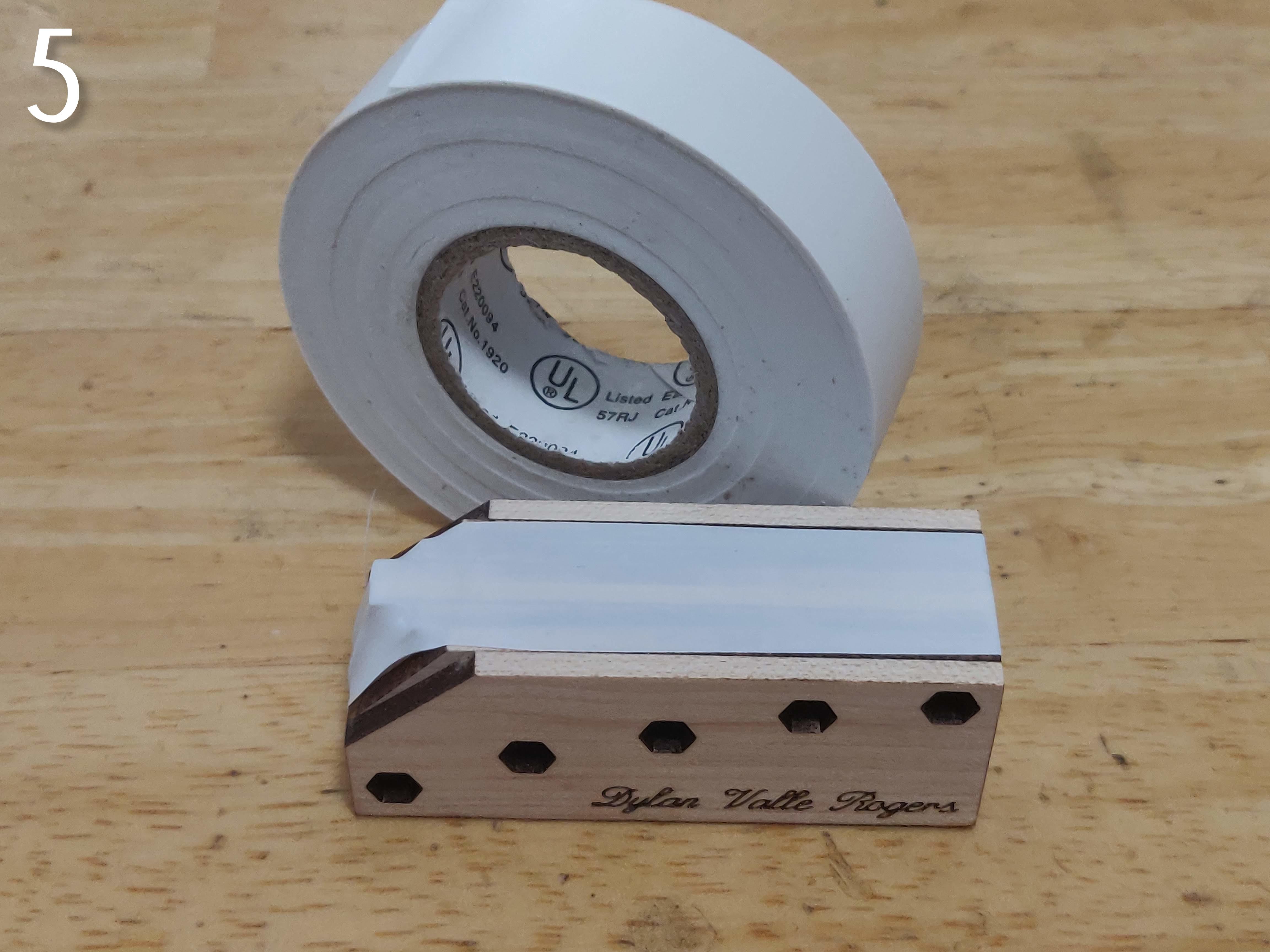
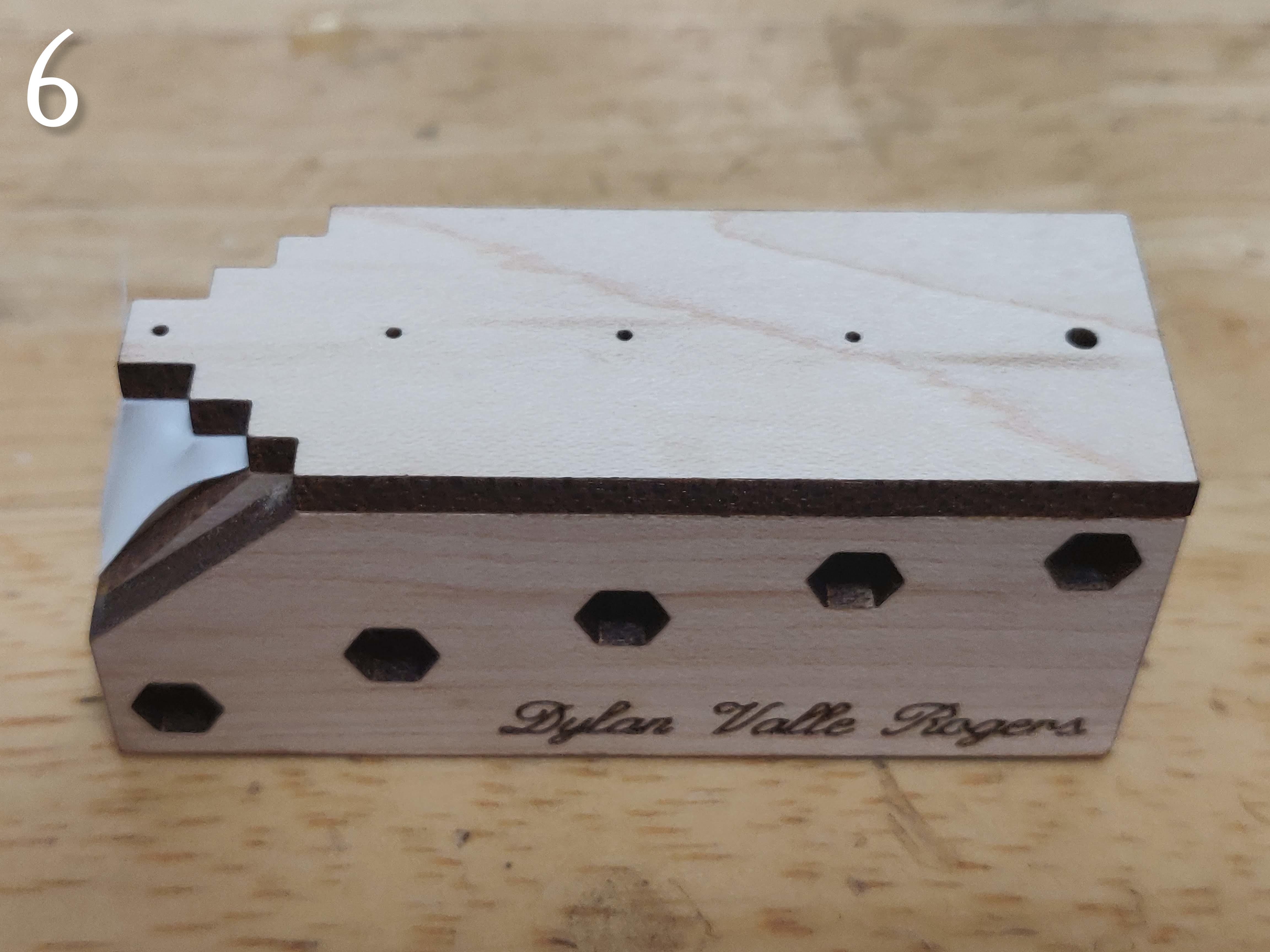
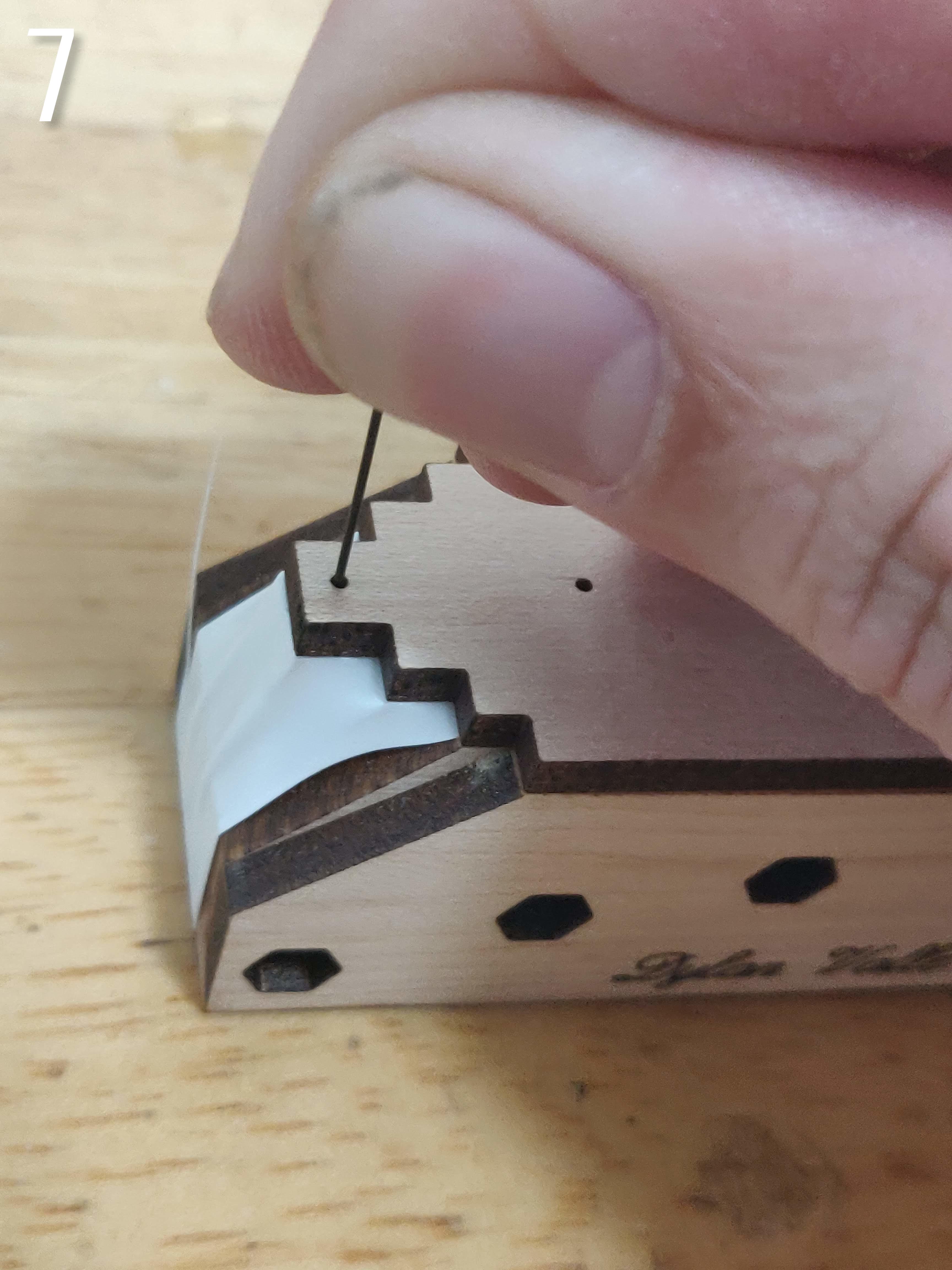
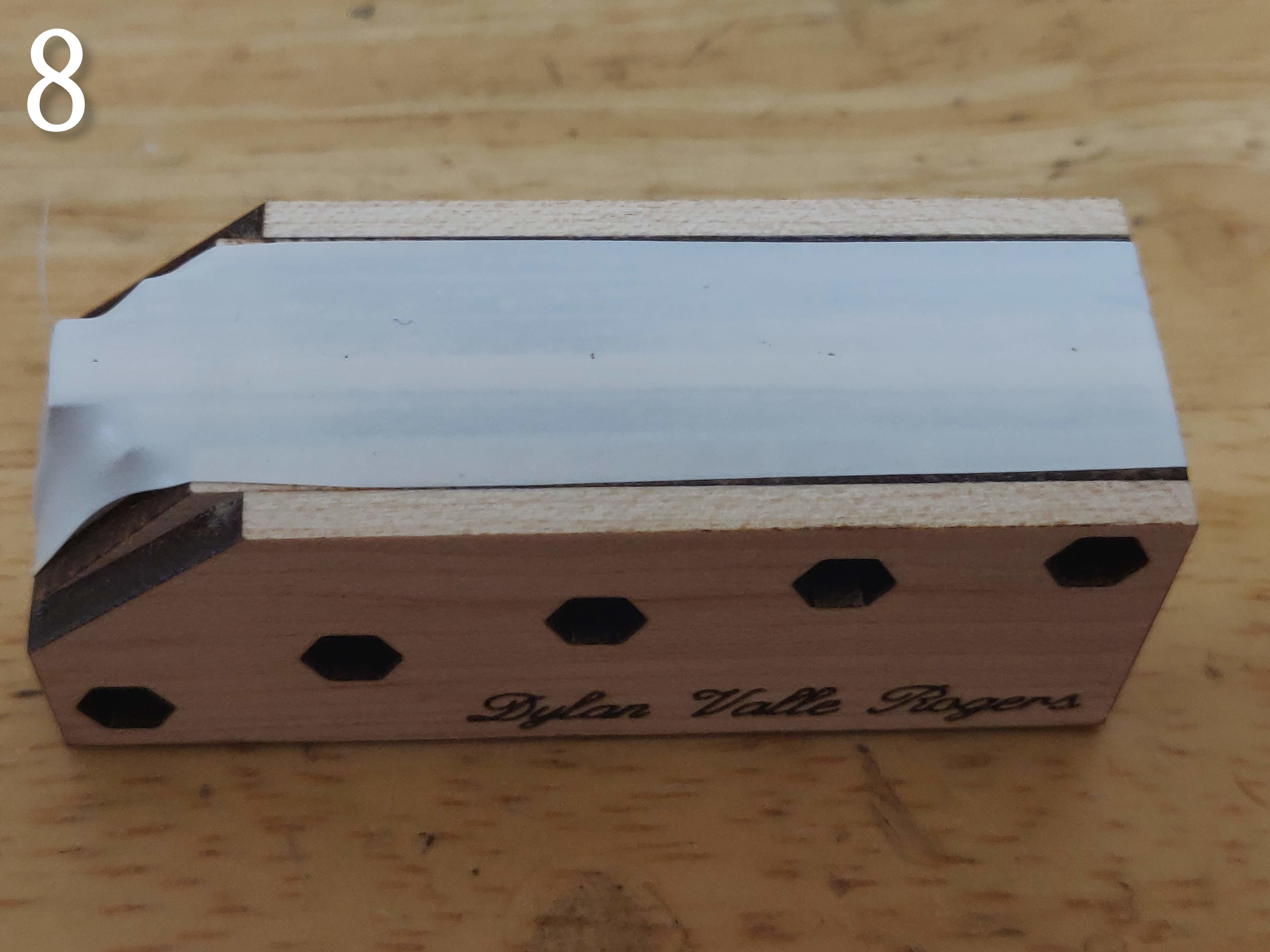
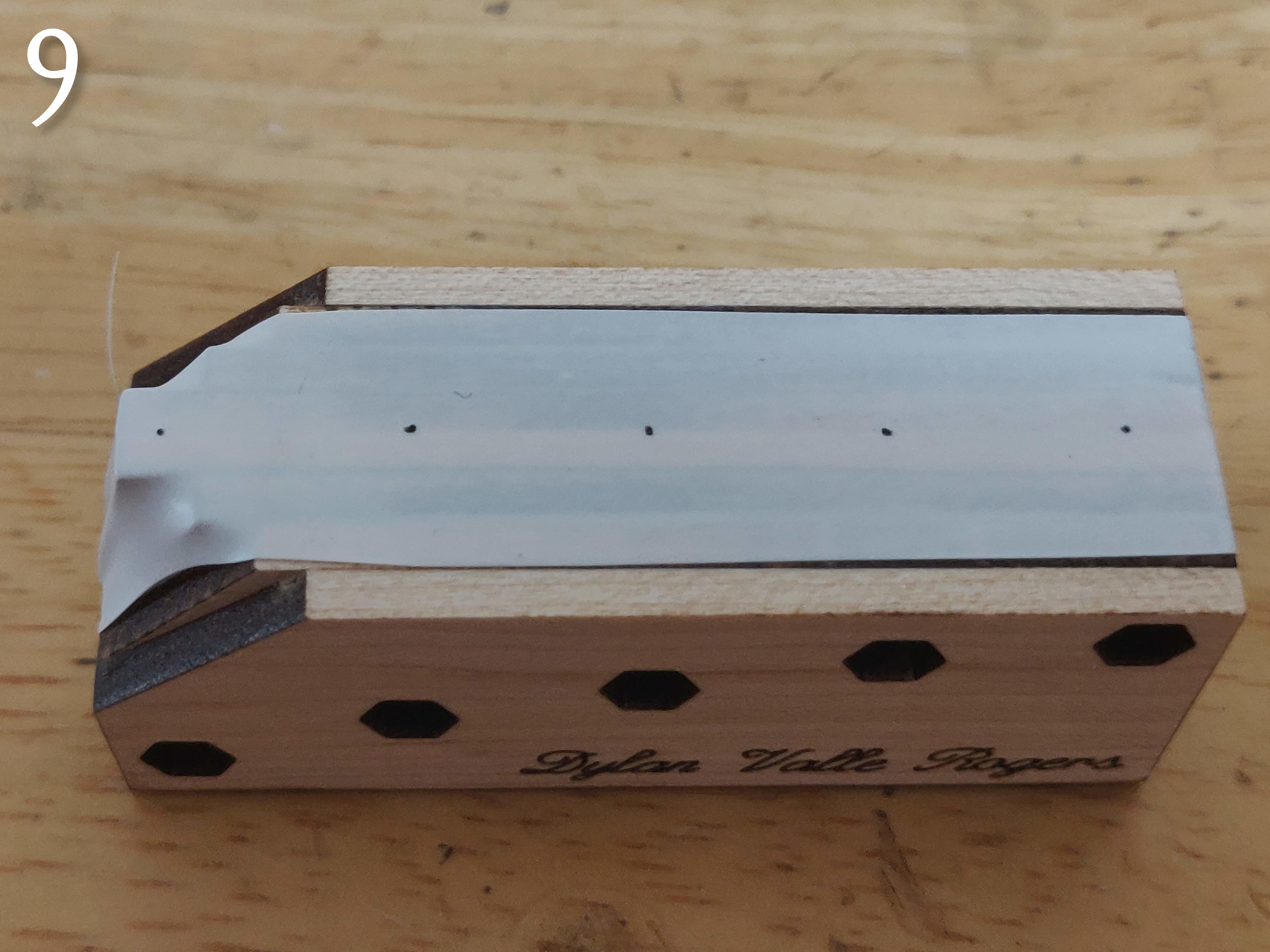
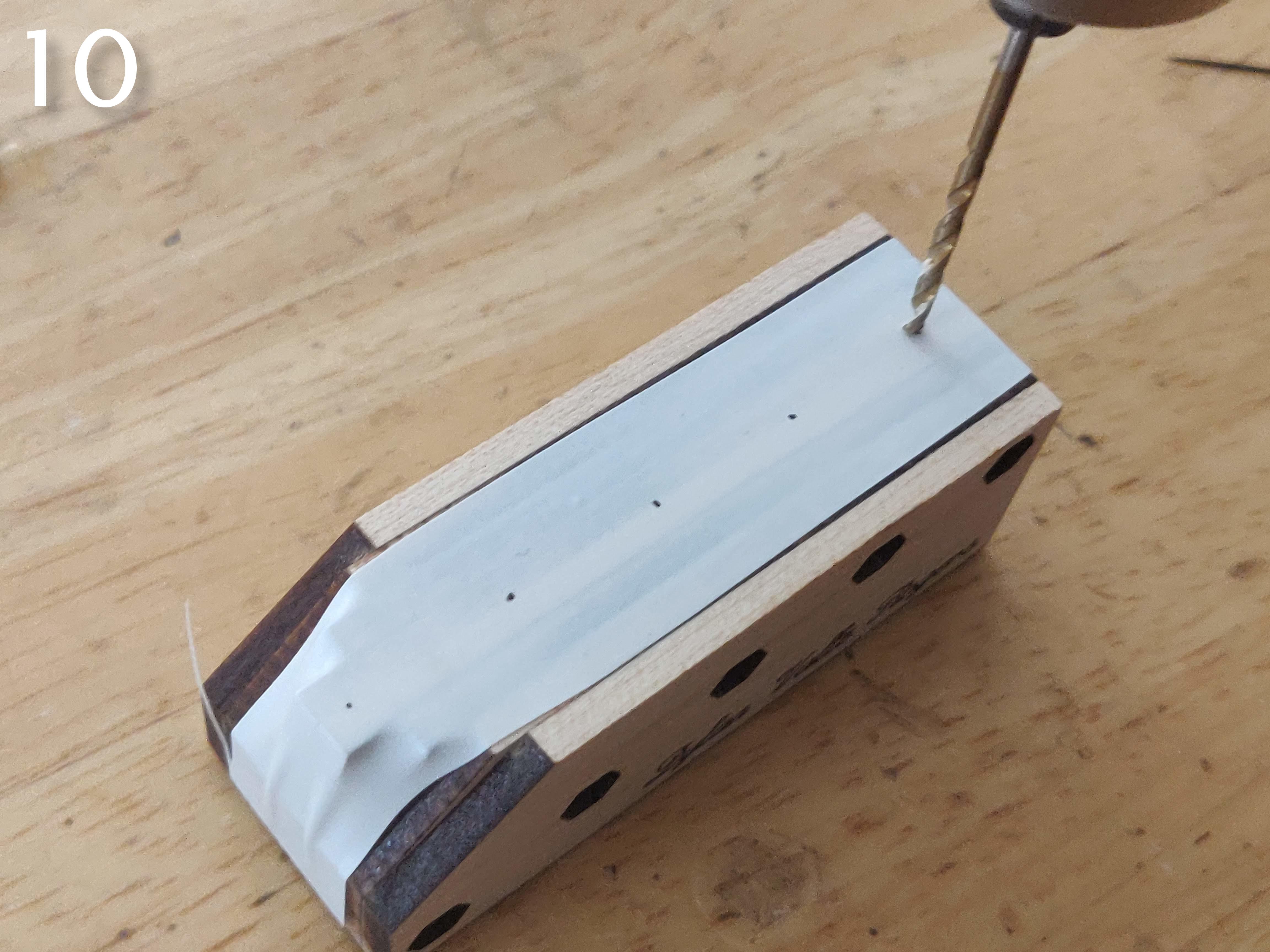
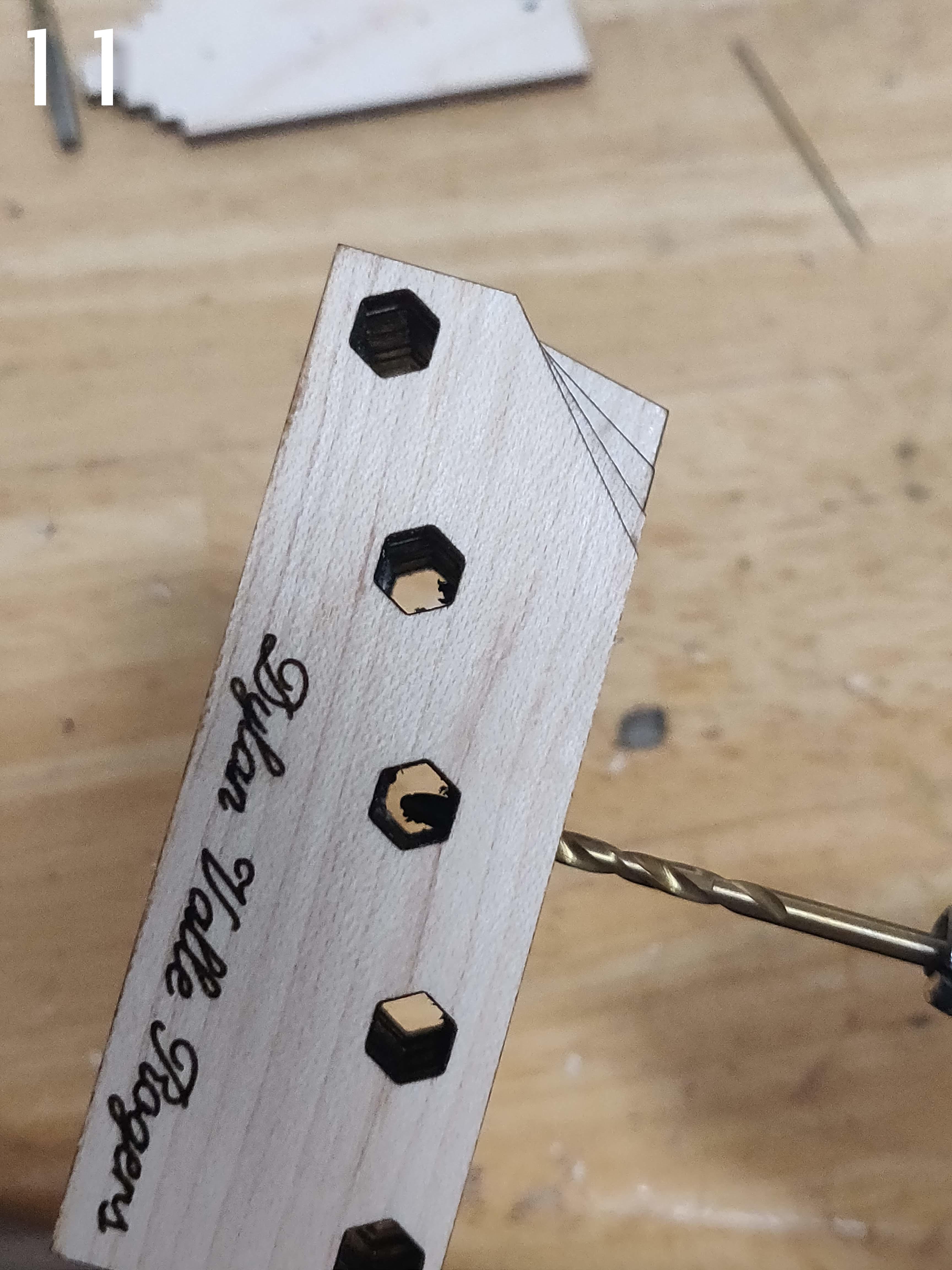
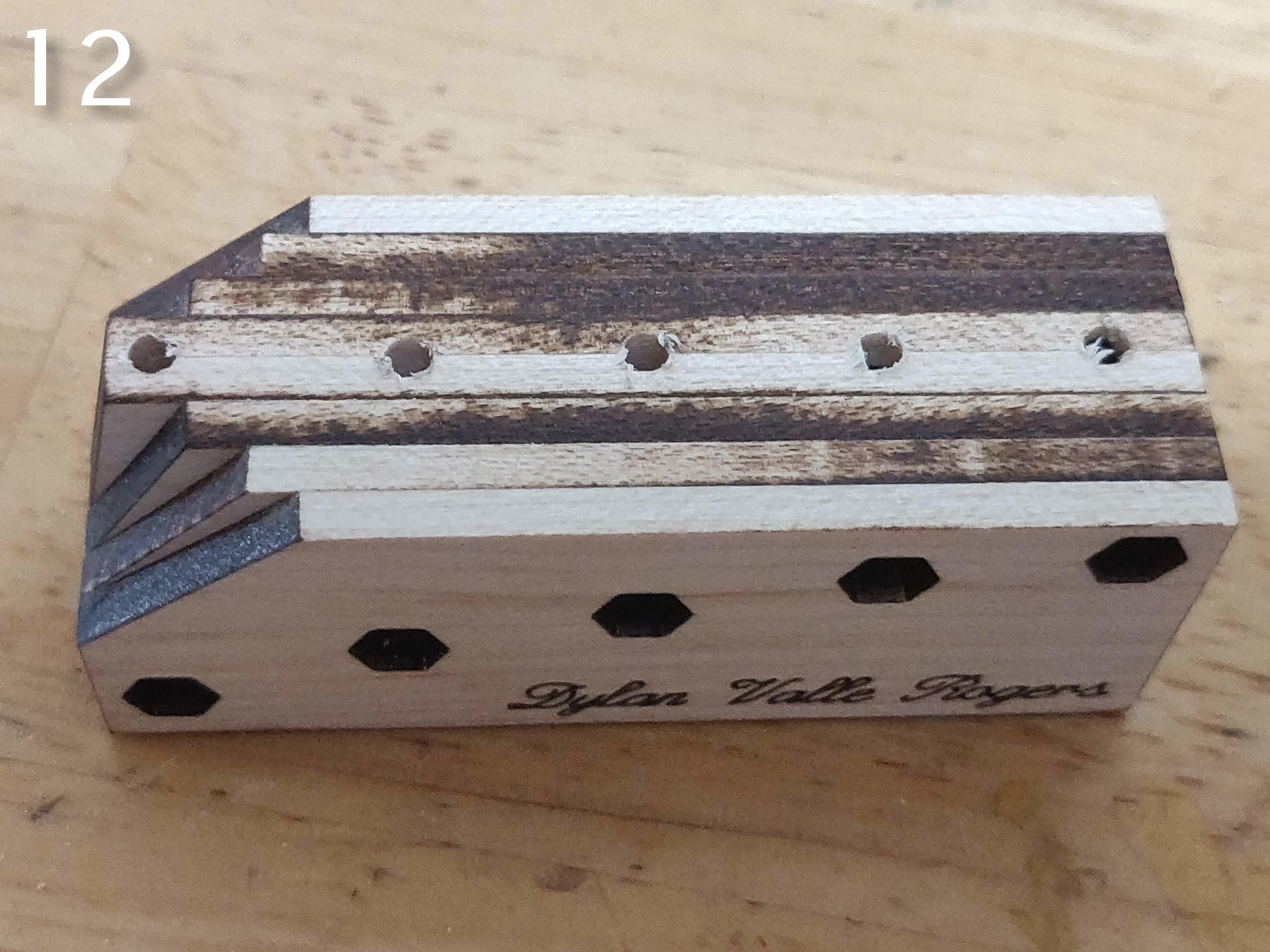
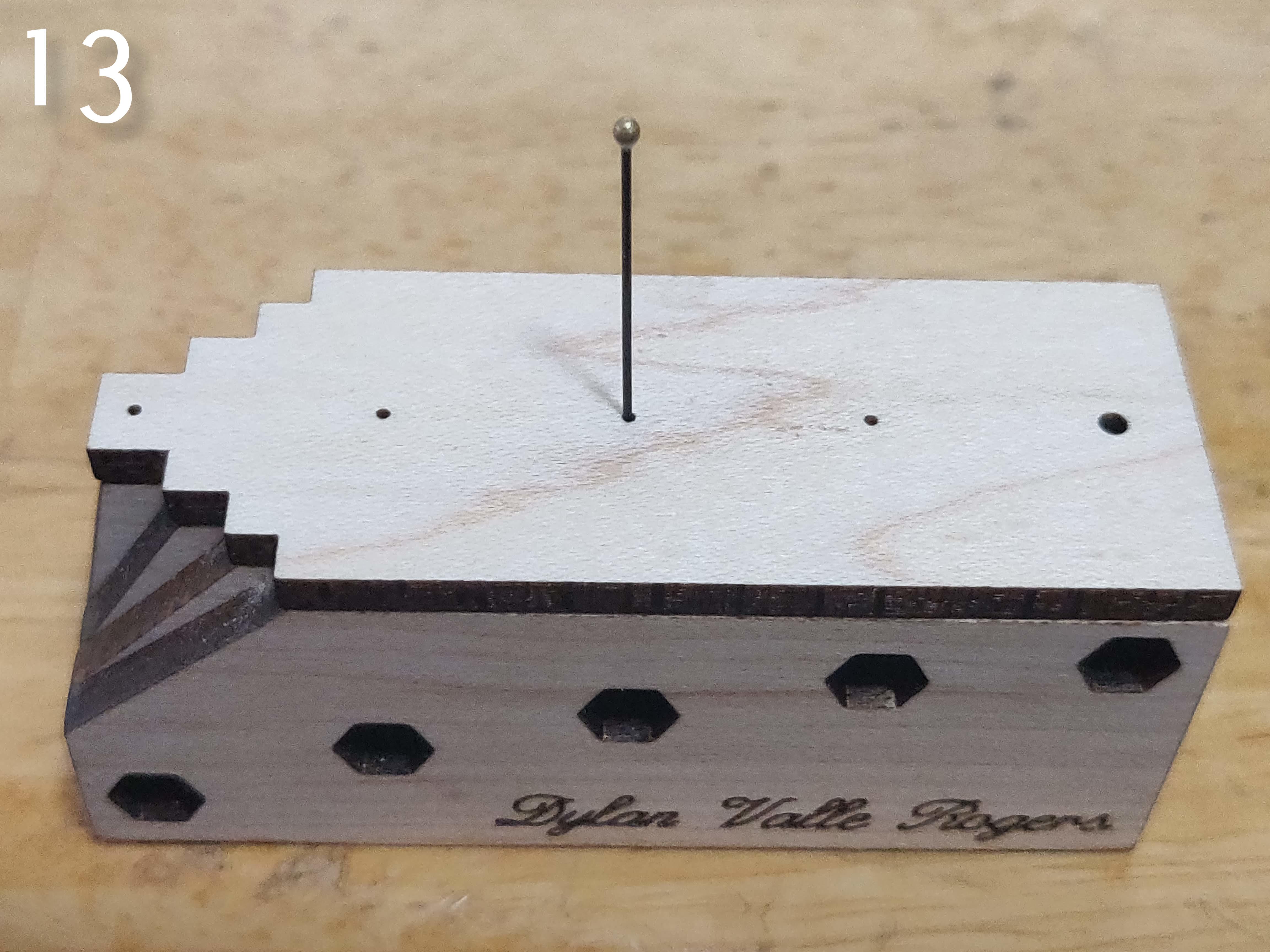
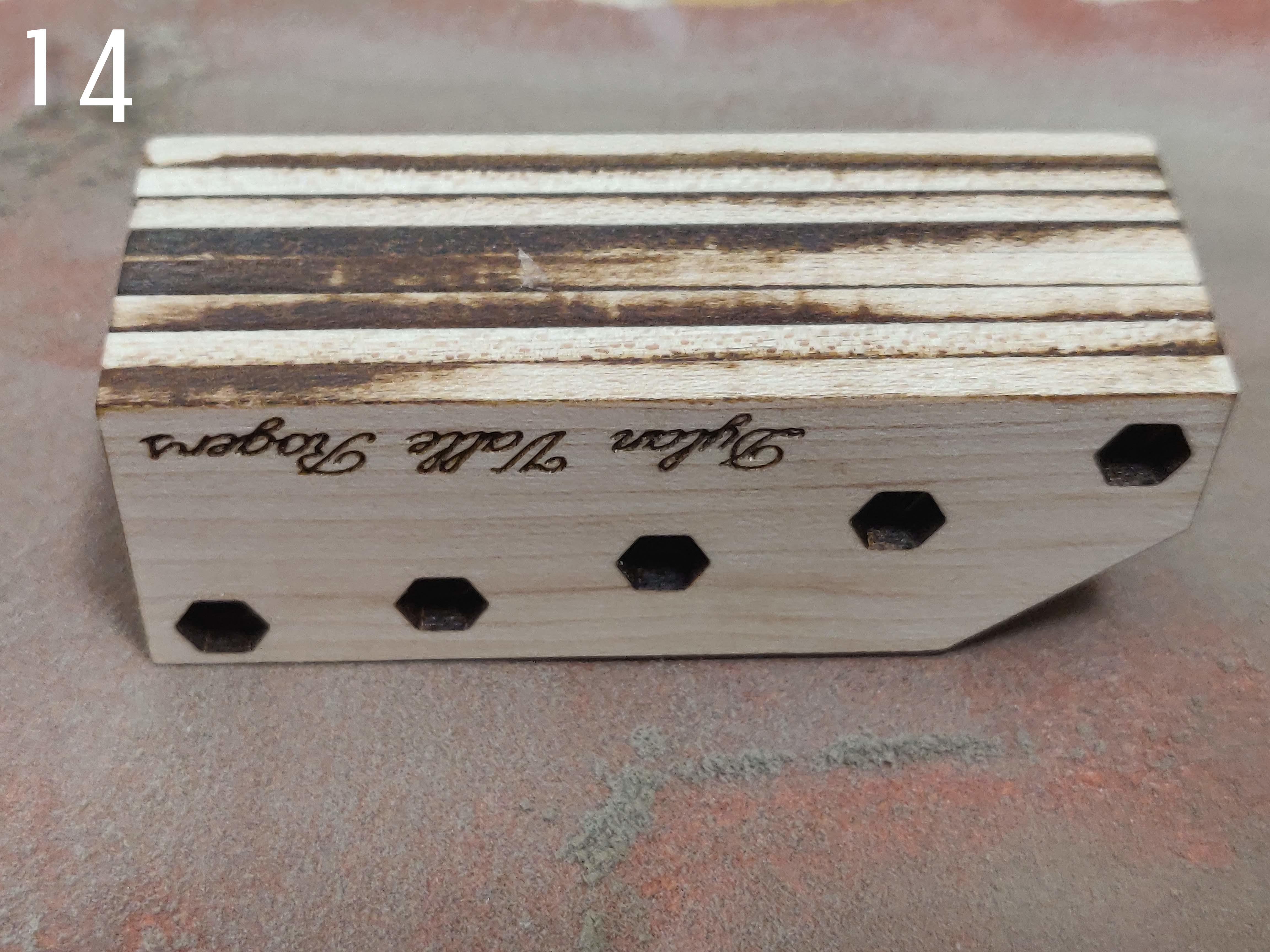
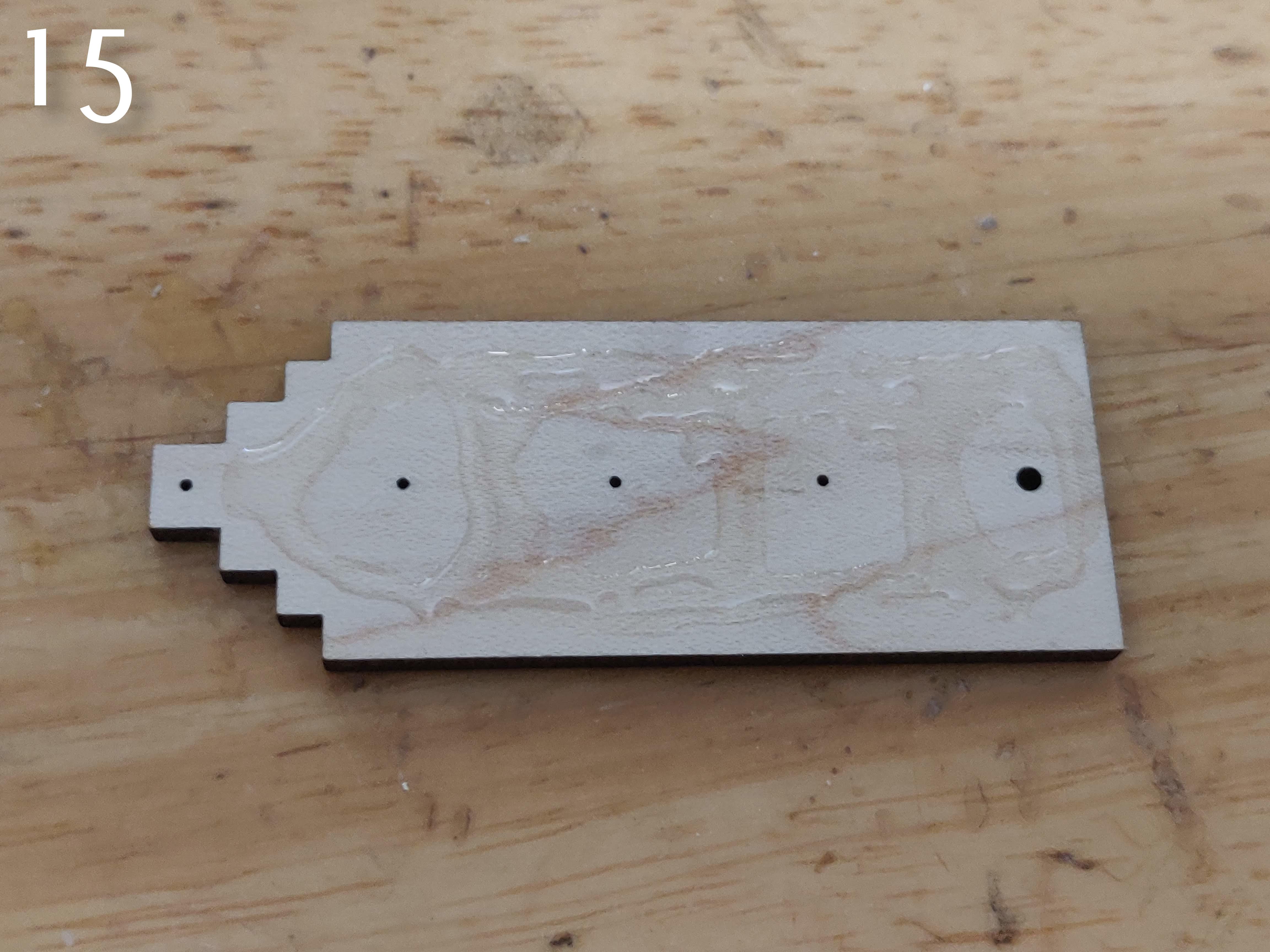
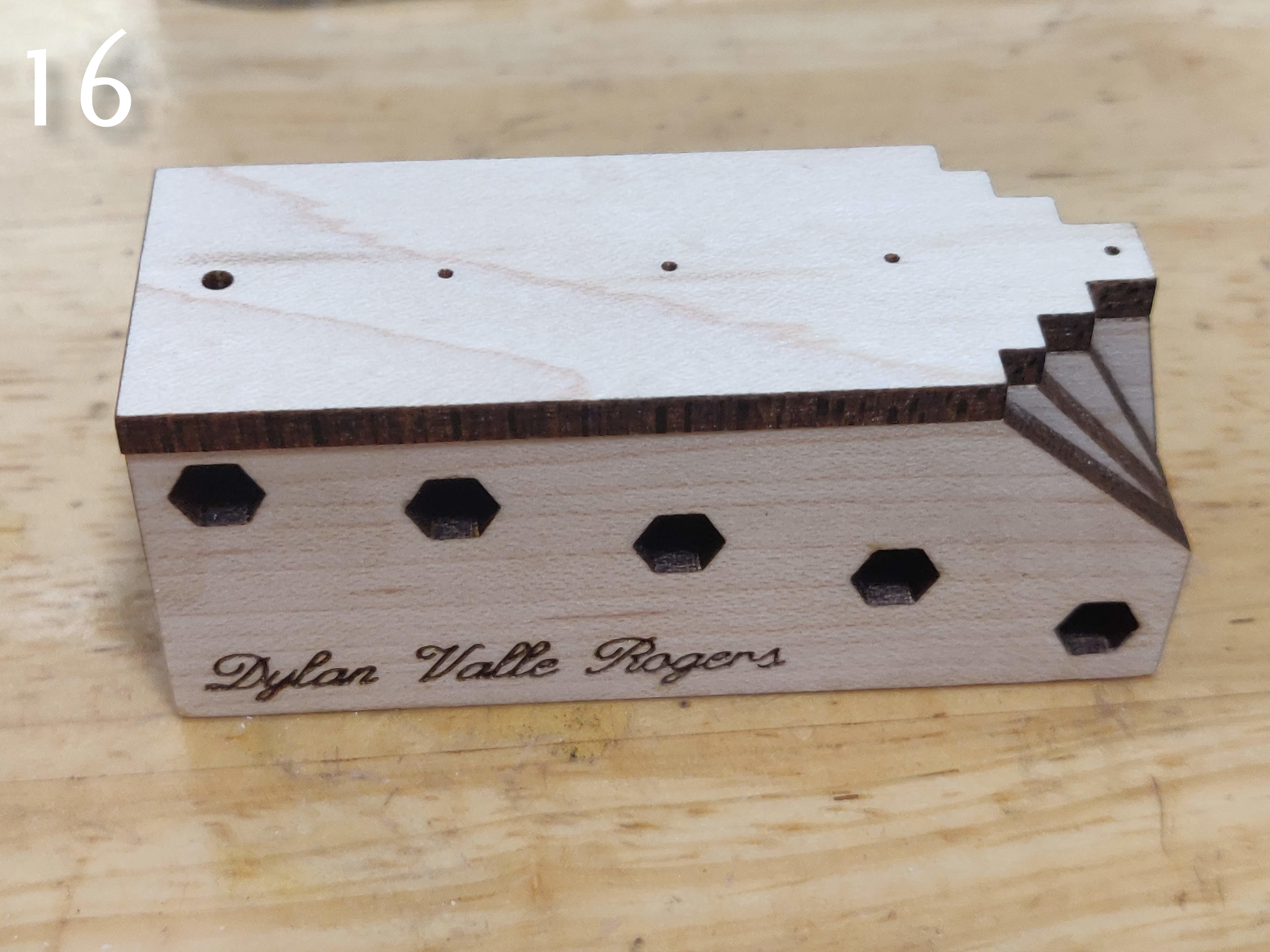
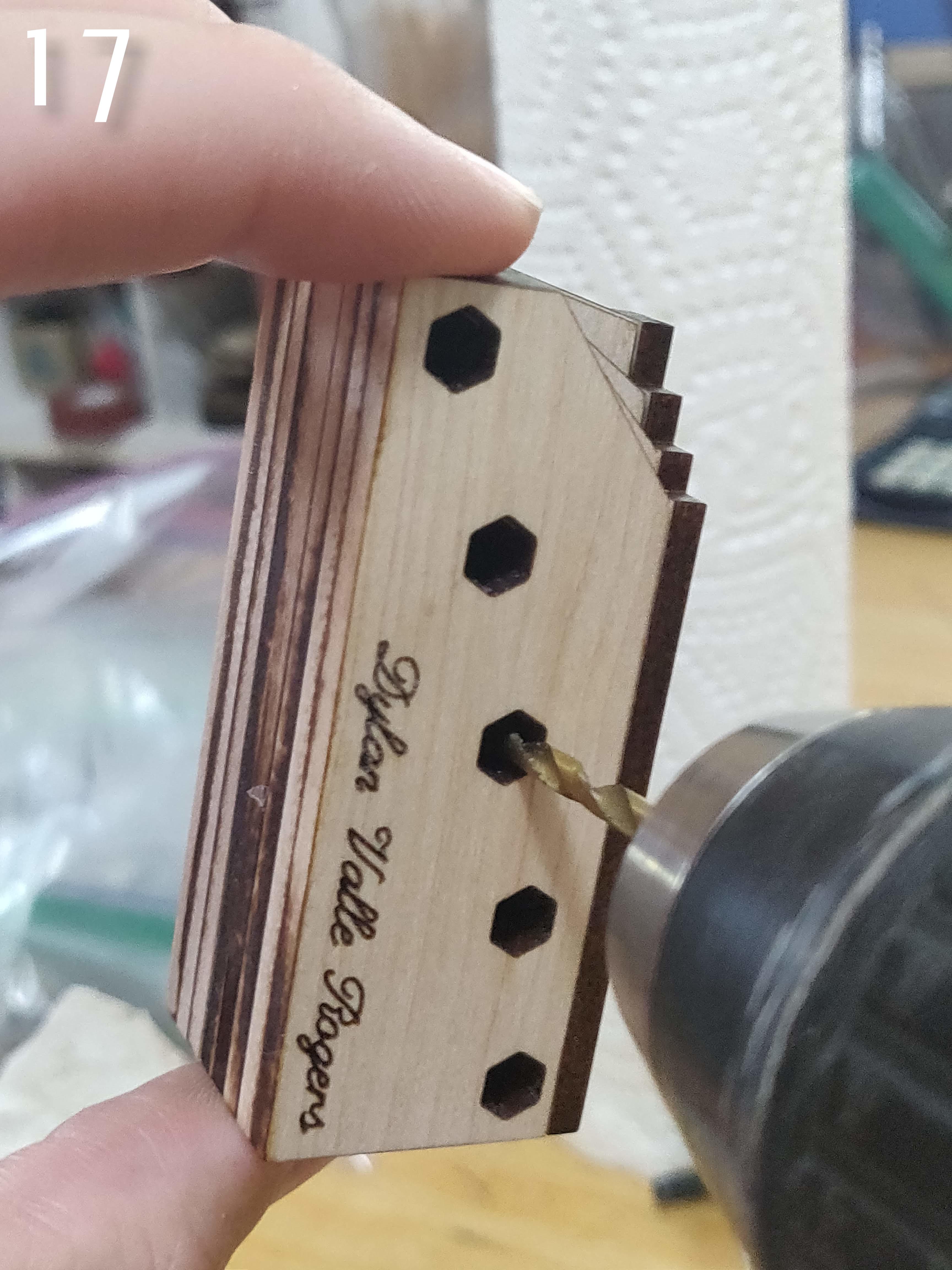
- Sand the top, bottom, front, and back of the block with 150 grit sandpaper until each side is flat. Sand again with 220 grit. (and again with higher grits if you want)
- Tape the top of the block with light colored electrical tape, (or masking tape if you don't have it), as shown in photo 5. The rubbery feel of electrical tape will help keep the top of the block from slipping in the next steps.
- Align the last wooden piece on the top of the block, over the electrical tape.
- Push an insect pin through the pinholes on the top piece so that it pokes holes in the electrical tape as shown in photo 7. Take care not to let the top piece slip out of alignment.
- Remove the top piece. The holes in the tape are hard to see, so use a fine tip sharpie to make them more visible.
- Use a 1.5 mm/1/16 in drill bit to drill from the sharpie marks down to the hexagonal holes in the sides of the block. Be careful to keep the drill bit perpendicular to the top. Do not drill all the way through the block. Stop in the hexagon as shown in photo 11.
- Align the top piece on the top of the rest of the block again. Make sure that the insect pin easily goes all the way from the top of the block to the bottoms of the hexagonal holes. If the holes are misaligned, you will have to drill new holes or widen existing ones until the pin fits.
- Take the top piece off again and sand the top of the block with 150 grit to remove the rough edges around the holes.
- Apply thick super glue to the top piece as shown in photo 15. It's important to keep the glue away from the holes, but still apply enough that the top piece isn't loose.
- Attach and align the top piece. Quickly before the glue sets, check that the pin still fits through each of the holes. If it doesn't, try to realign.
- When the glue is dry, use the same drill bit from earlier to remove the tear out caused by drilling through the tops of the hexagonal holes. See last photo.
Finishing
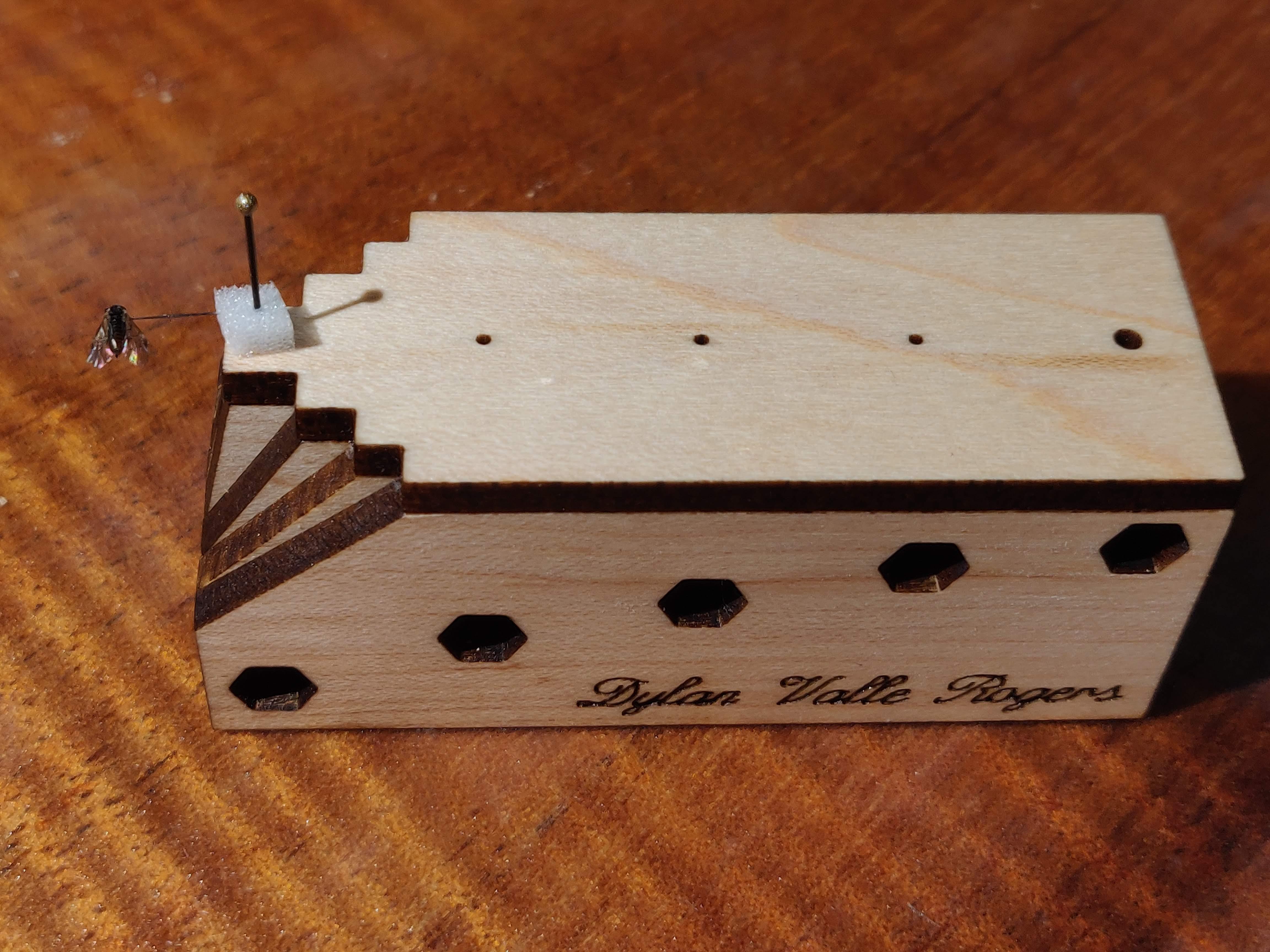
- Sand the sides of the block with 220 grit (and higher if desired).
- Apply boiled linseed oil (or stain or other oil according to your preference).
- You're done!
3D Printed Version Instructions
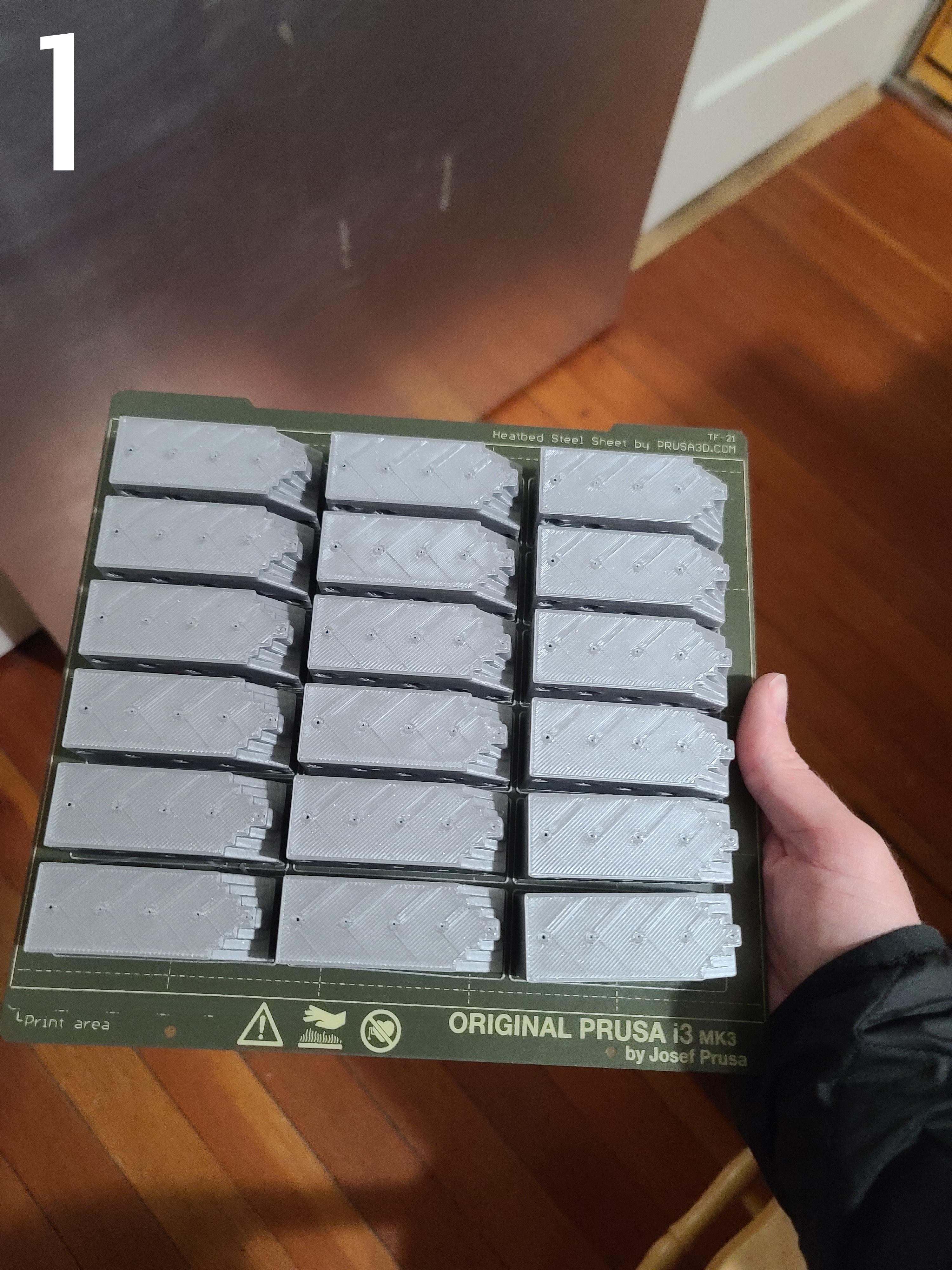
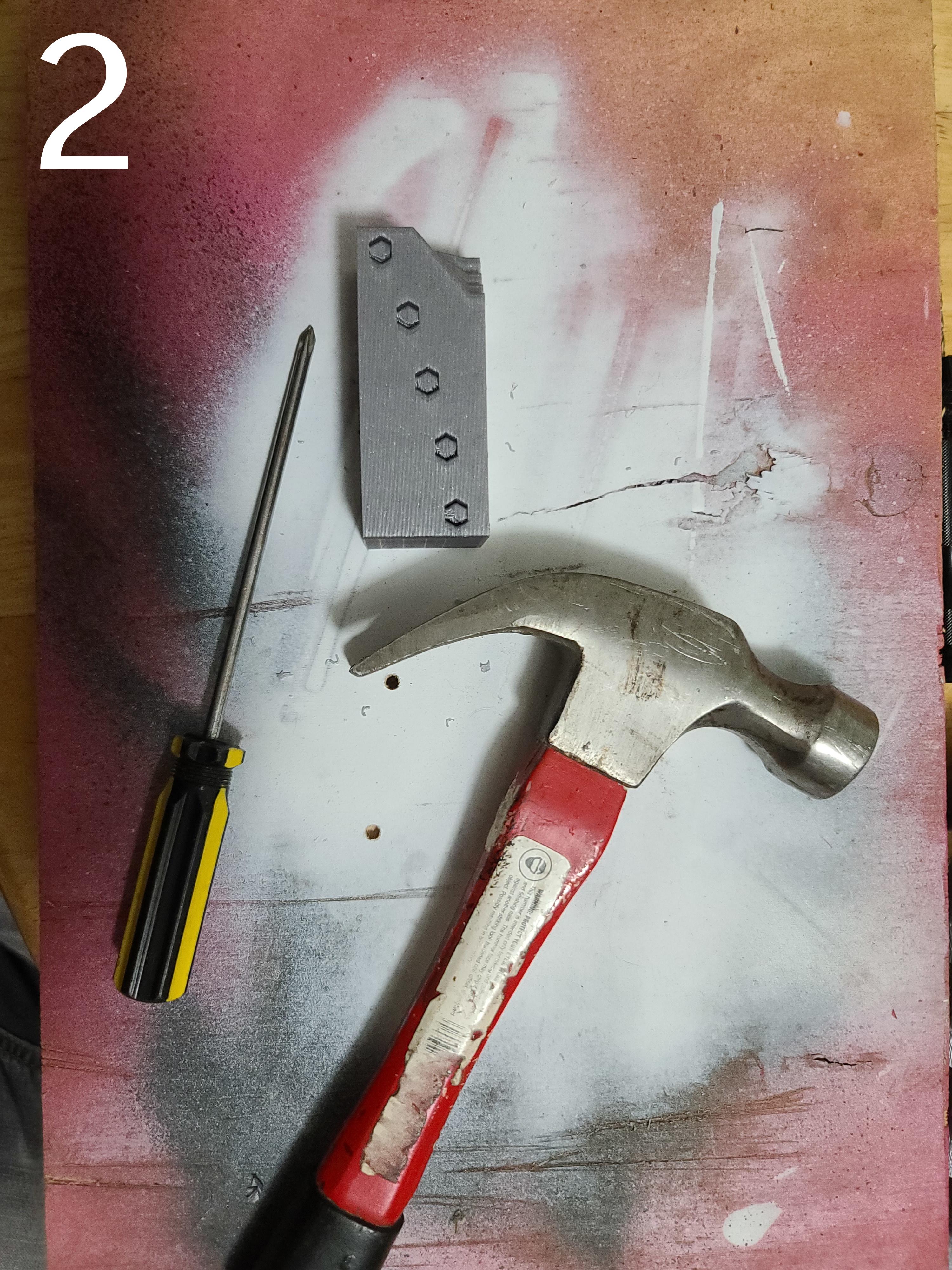
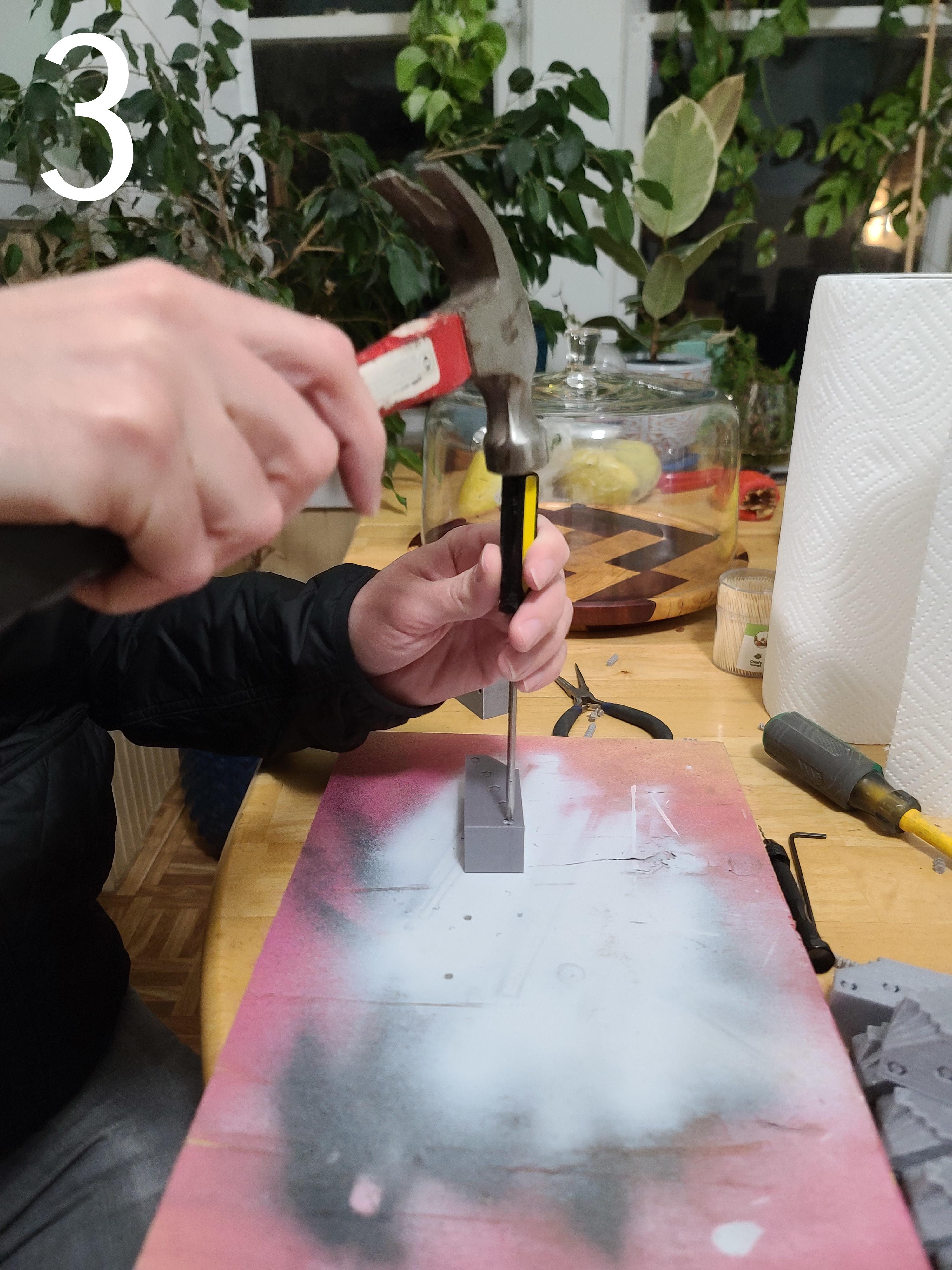
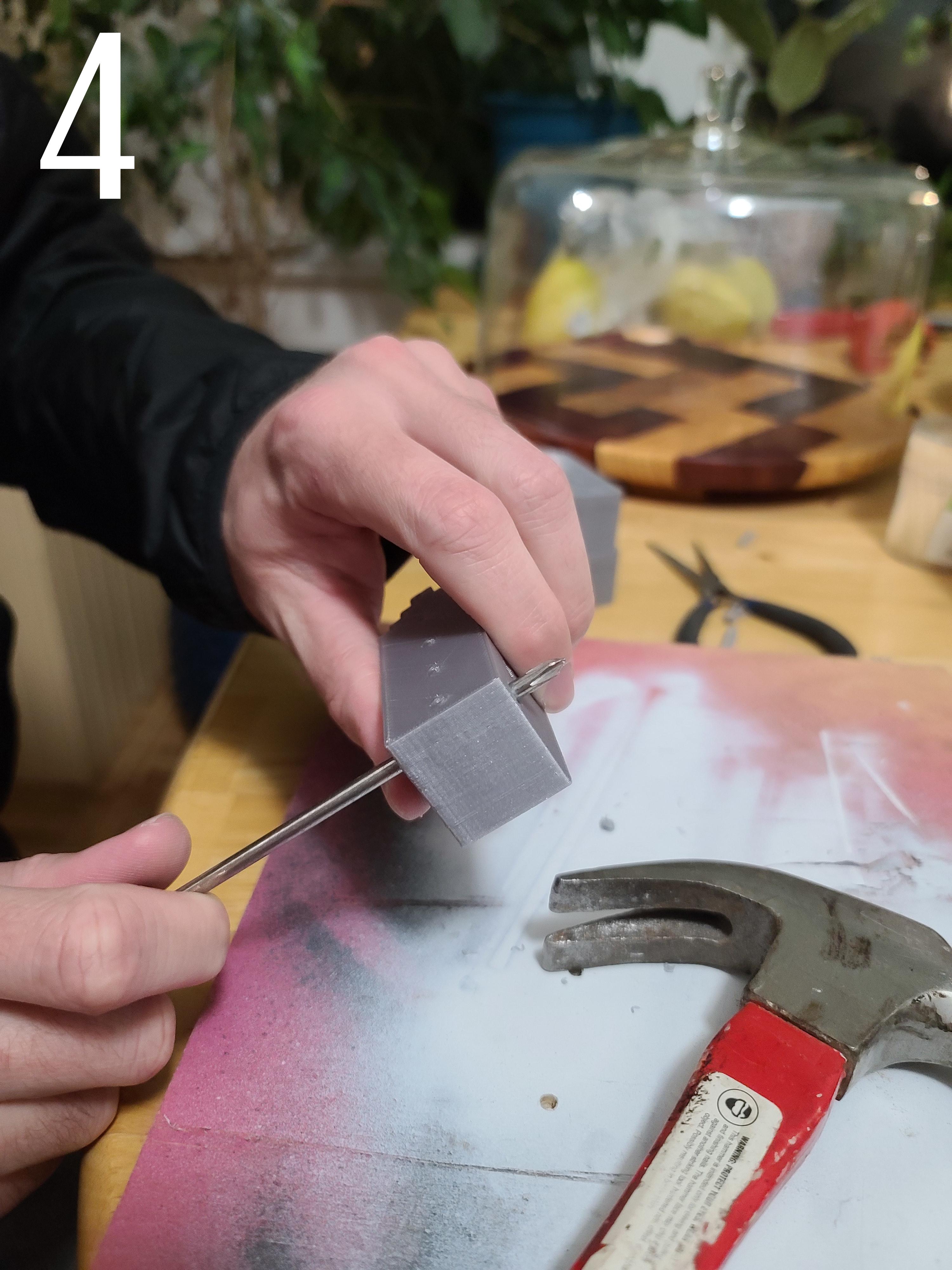
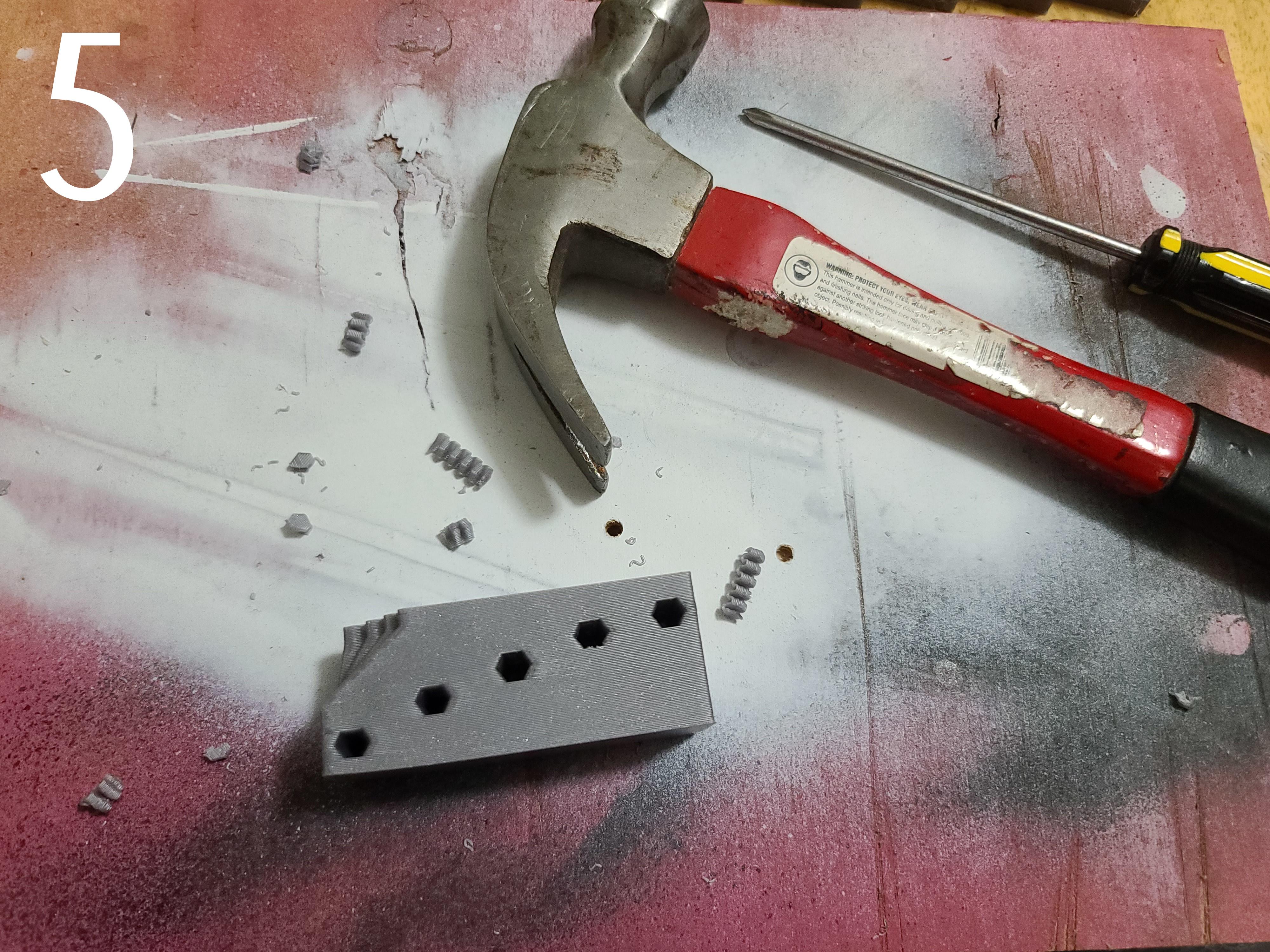
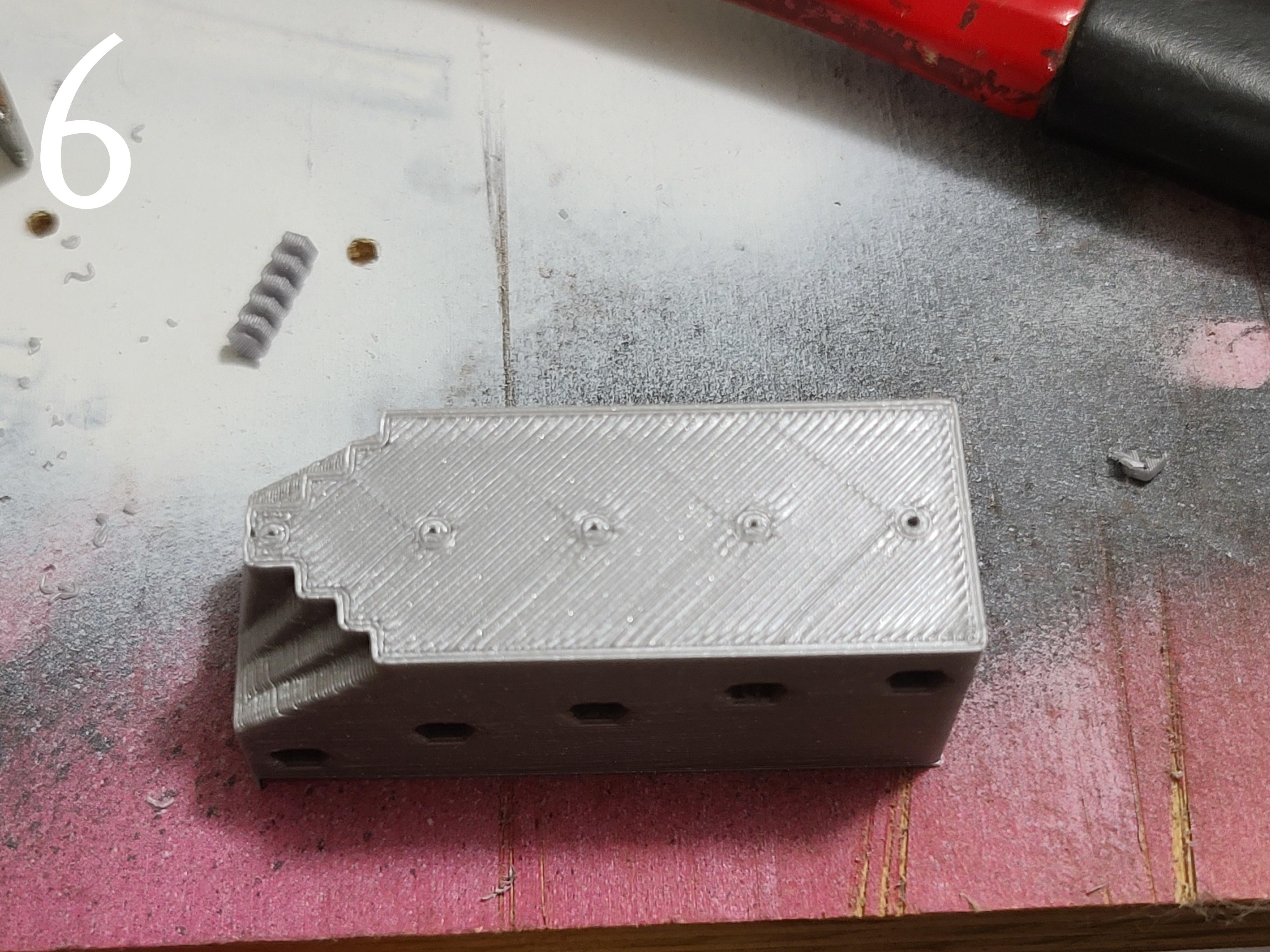
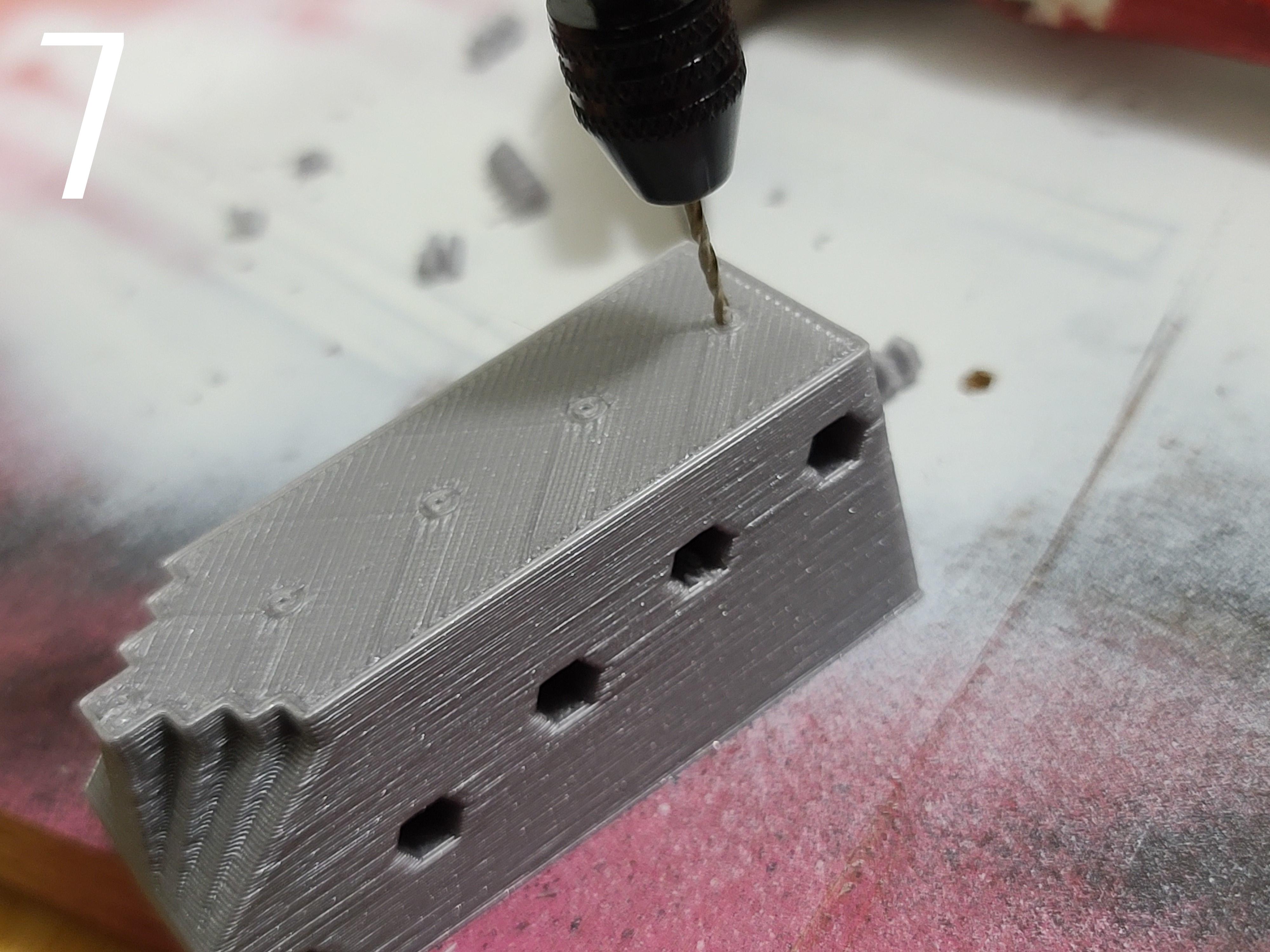
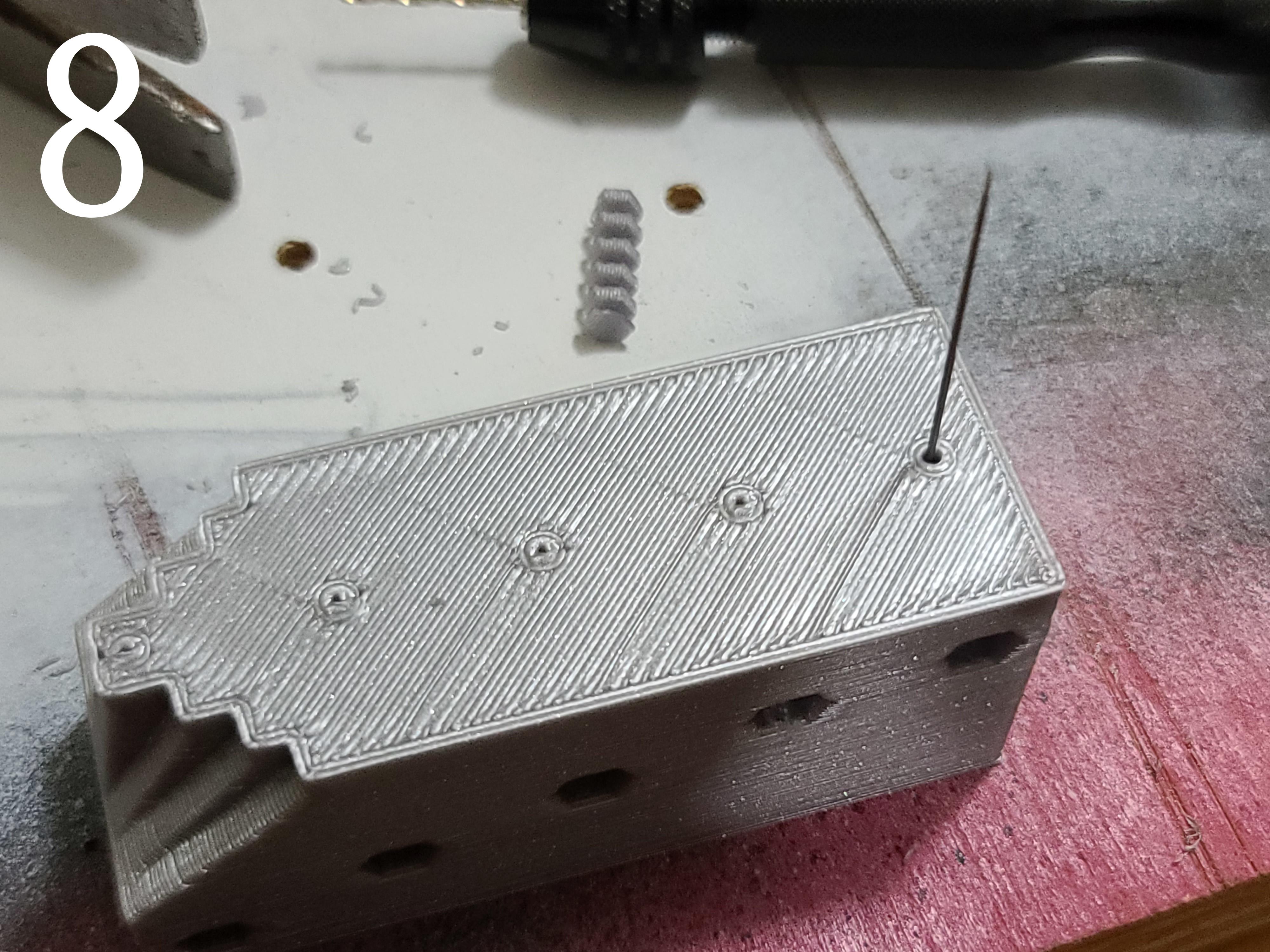
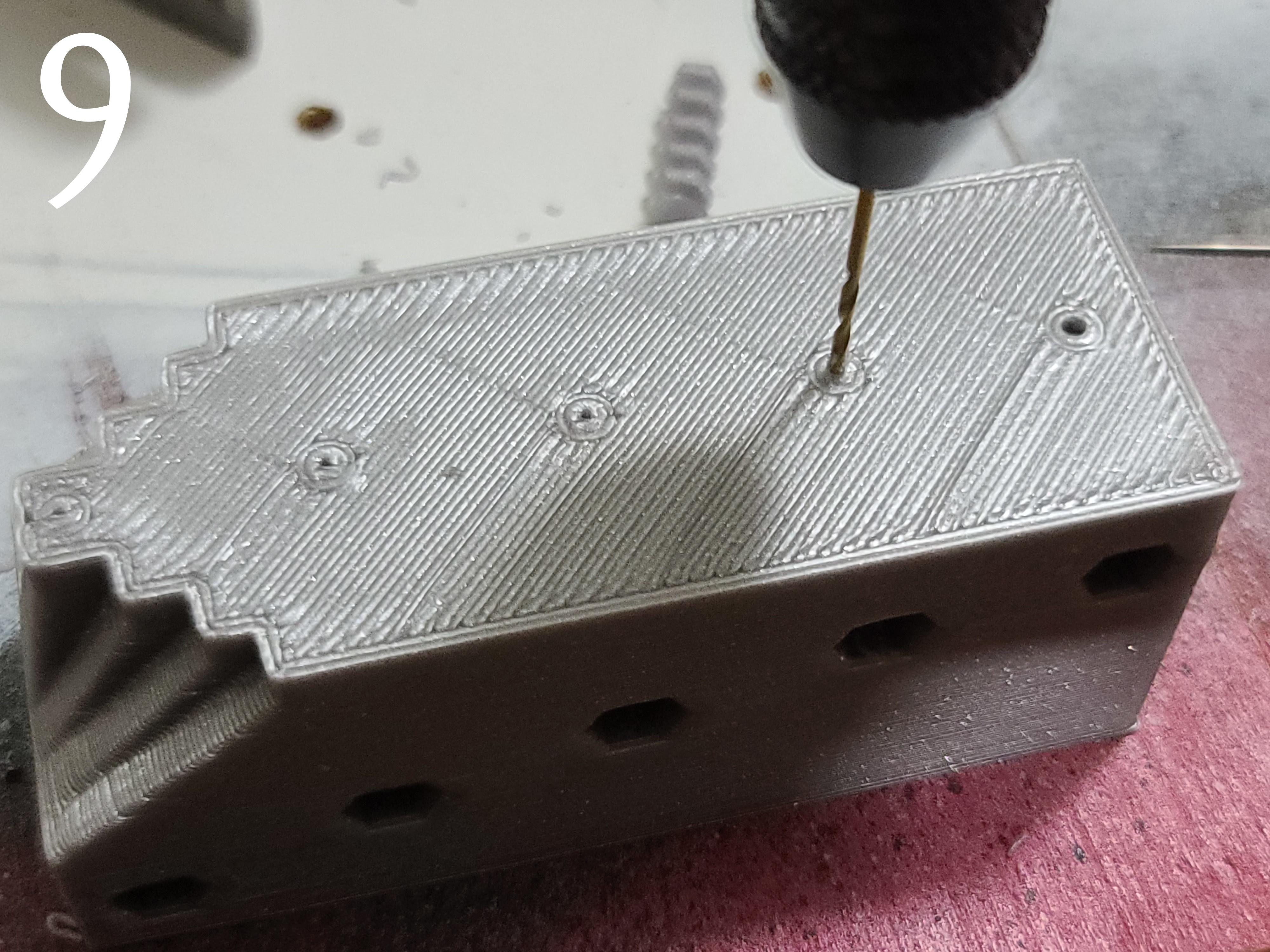
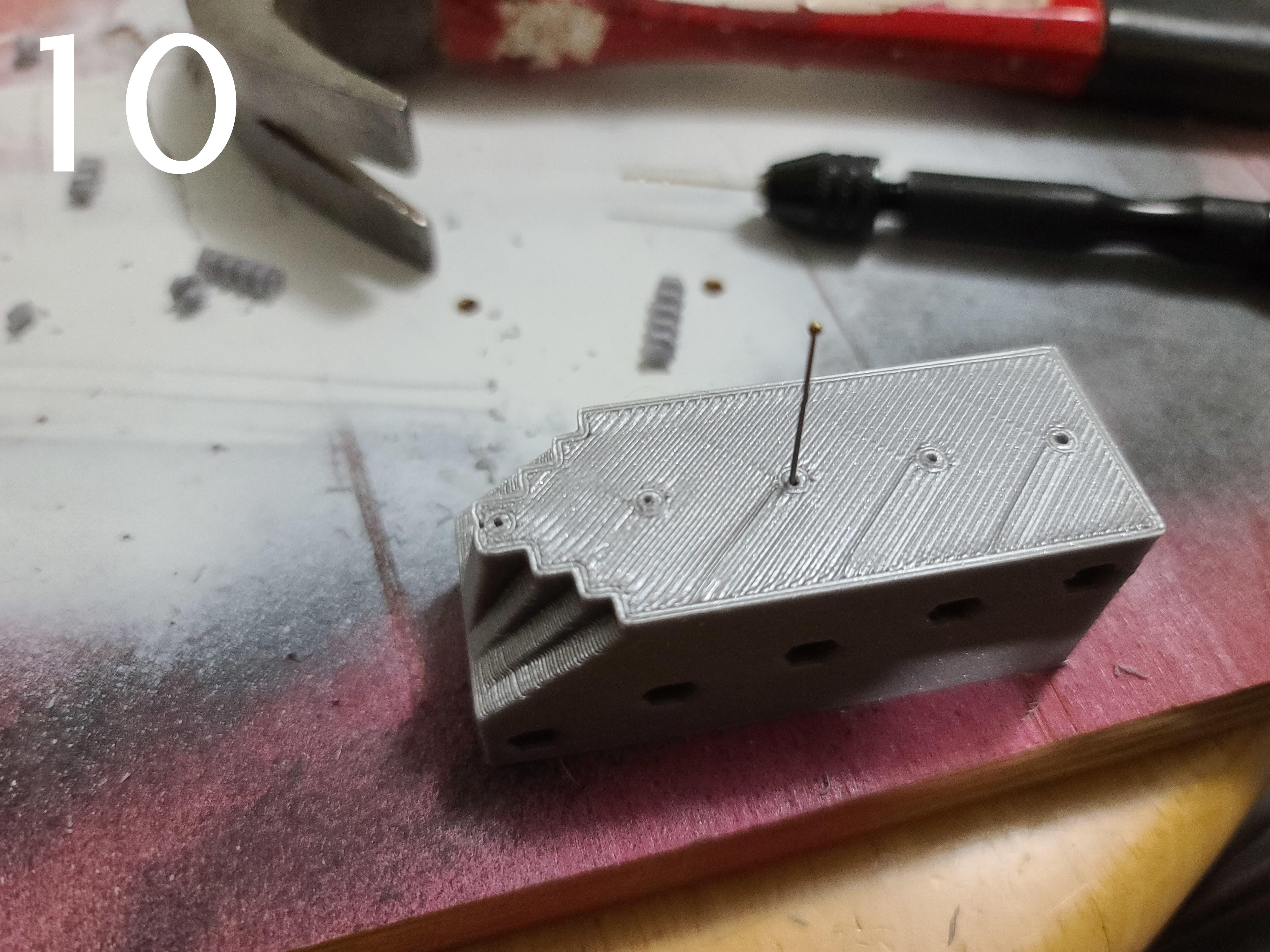
- Download the file and print it with support. I did a large batch at 0.3 mm per layer because of time constraints, but if you're only printing one you might want to do smaller layers. See photo 1.
- Use the hammer and metal punch/screwdriver to pound out the support from the hexagonal channels. See photos 2-5.
- Depending on your print settings, the small diameter holes at the top of the block might be blocked. If they are, use the 1.5 mm drill bit to drill out the shallowest hole on the non-tapered end of the block until the bit protrudes into the hexagonal channel. See photos 6-7.
- Check that the hole is cleared by placing the head of an insect pin into the hole. See photo 8. If it doesn't fit easily, try drilling a second time and wiggling the bit to remove more material.
- Use the 1.0 mm bit to drill out the the rest of the holes and check that the pin fits easily, point down. These holes should not be large enough to fit the head of the pin as in the first hole. See photos 9-10.